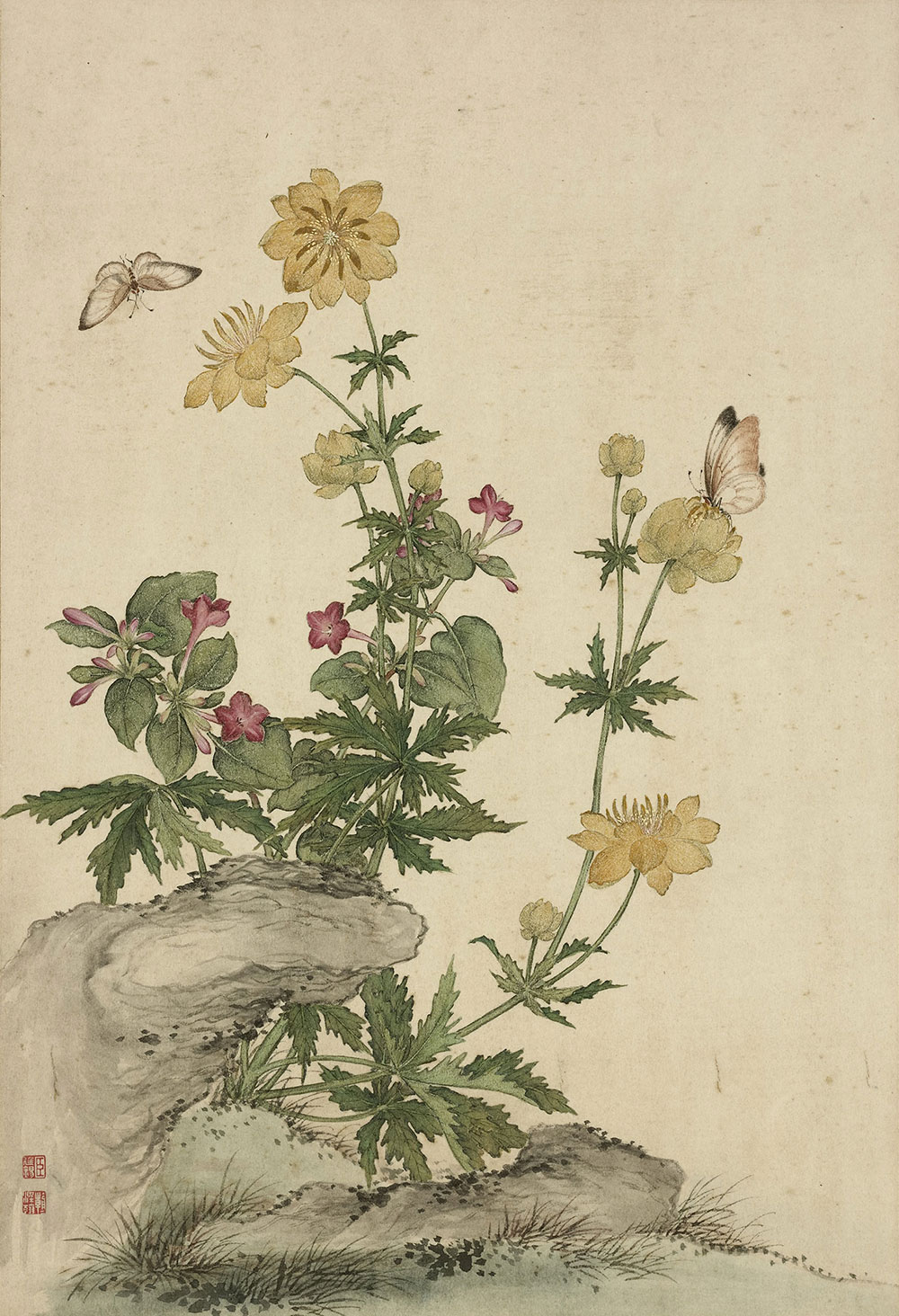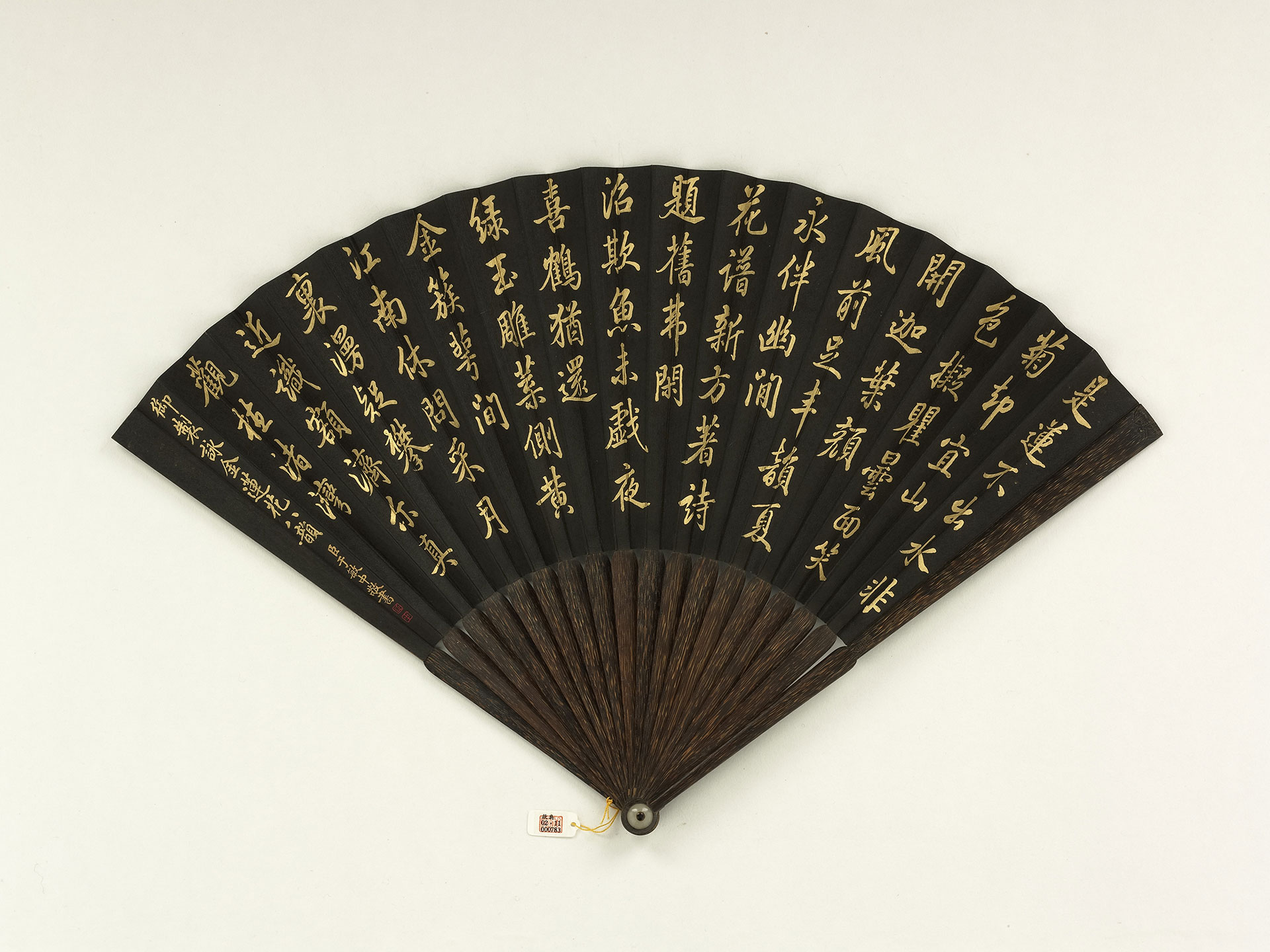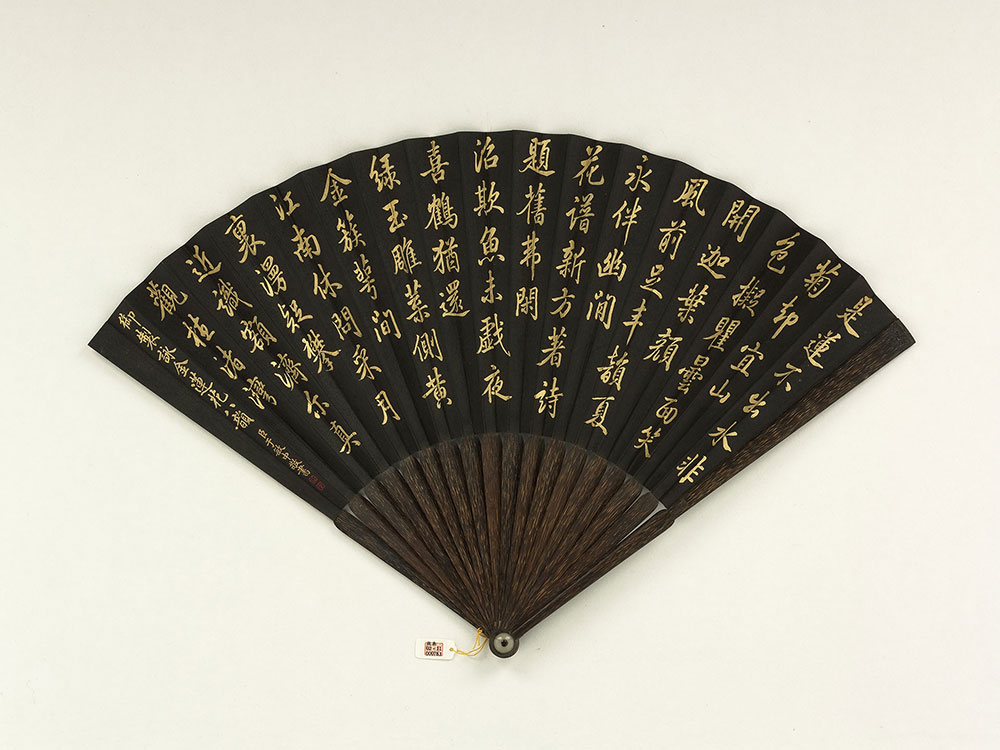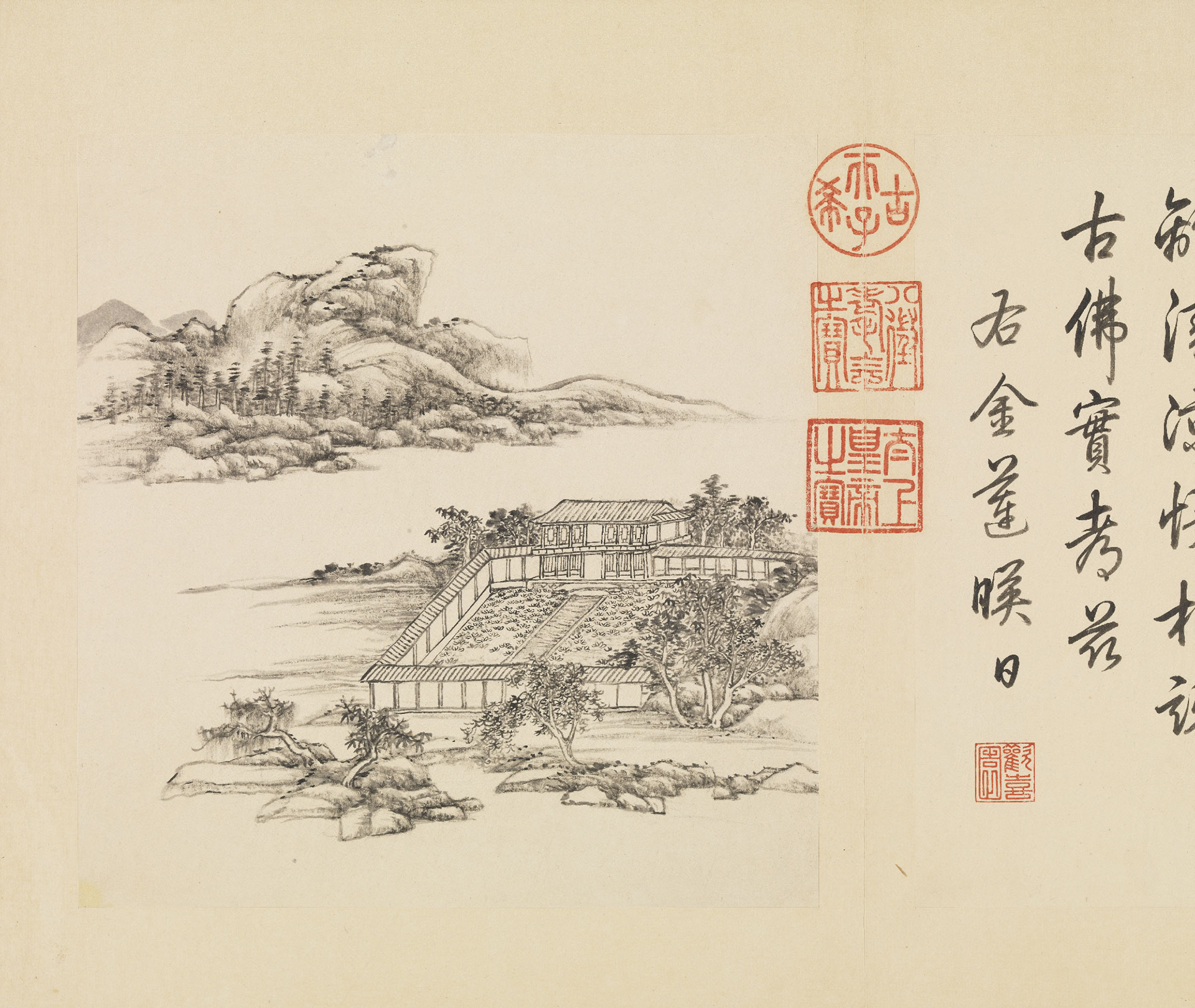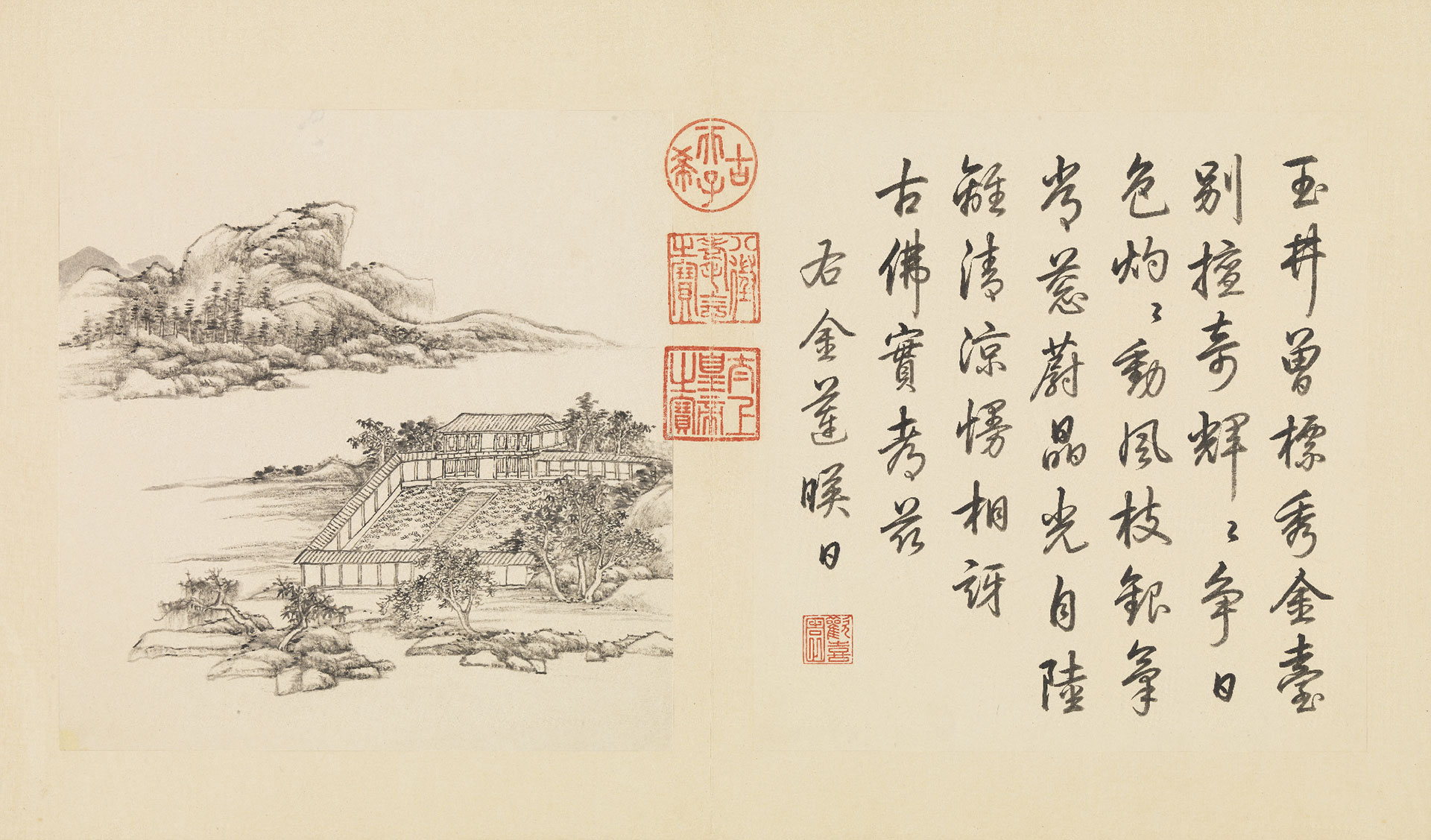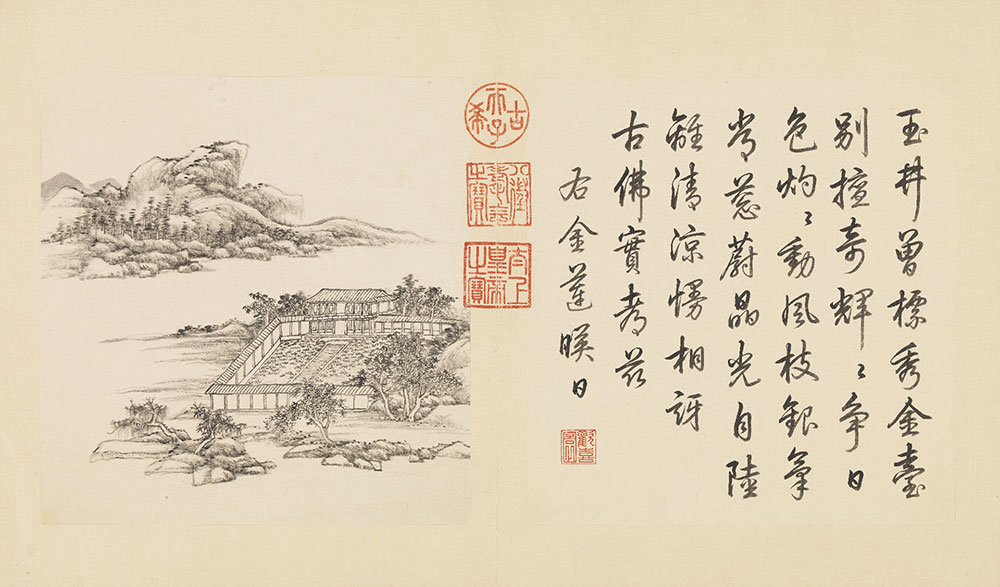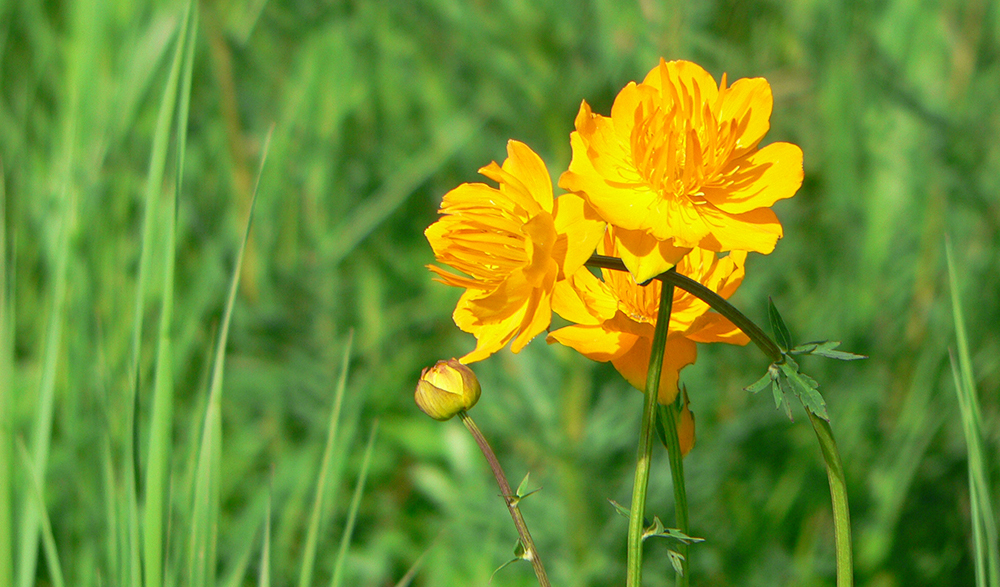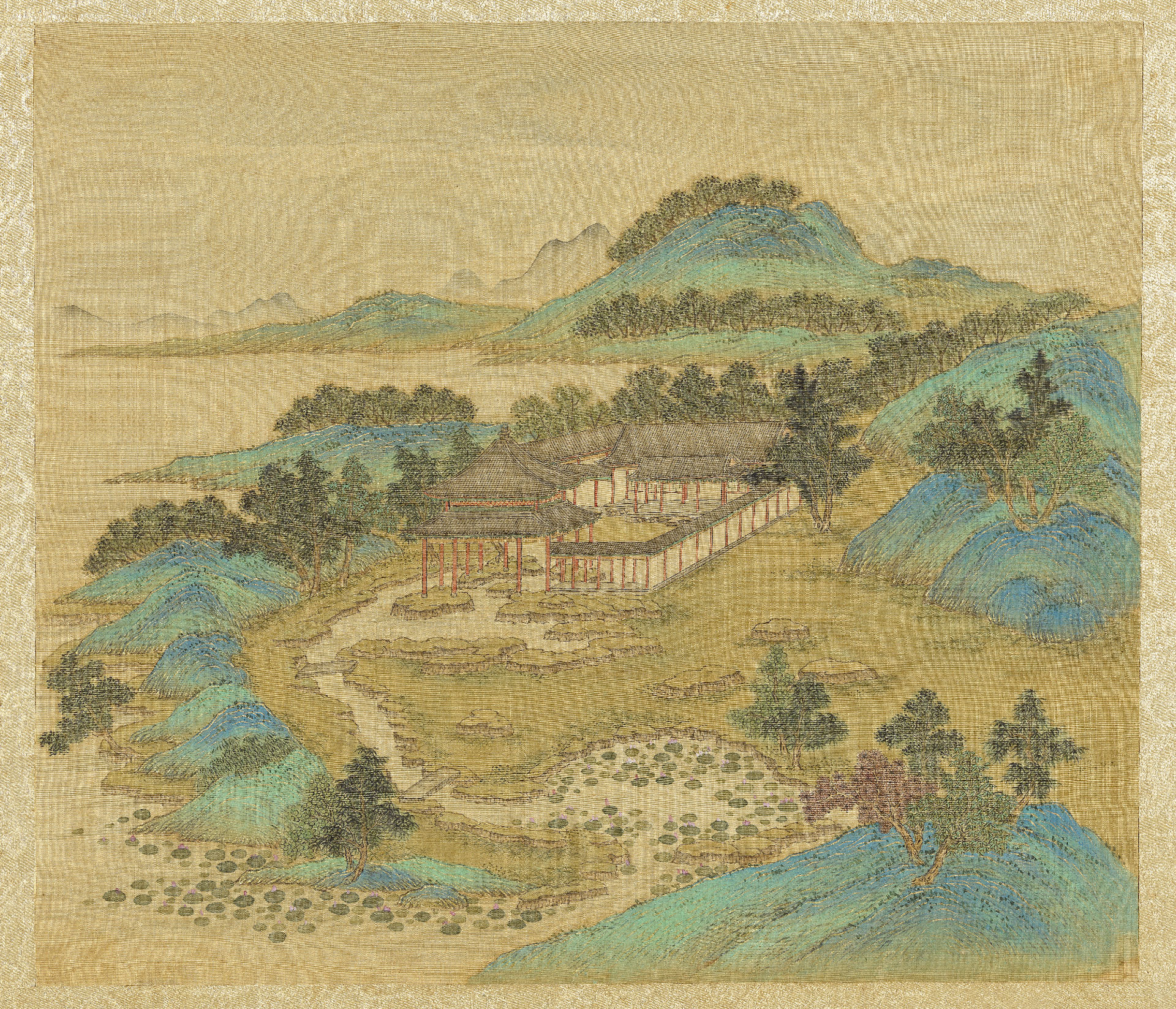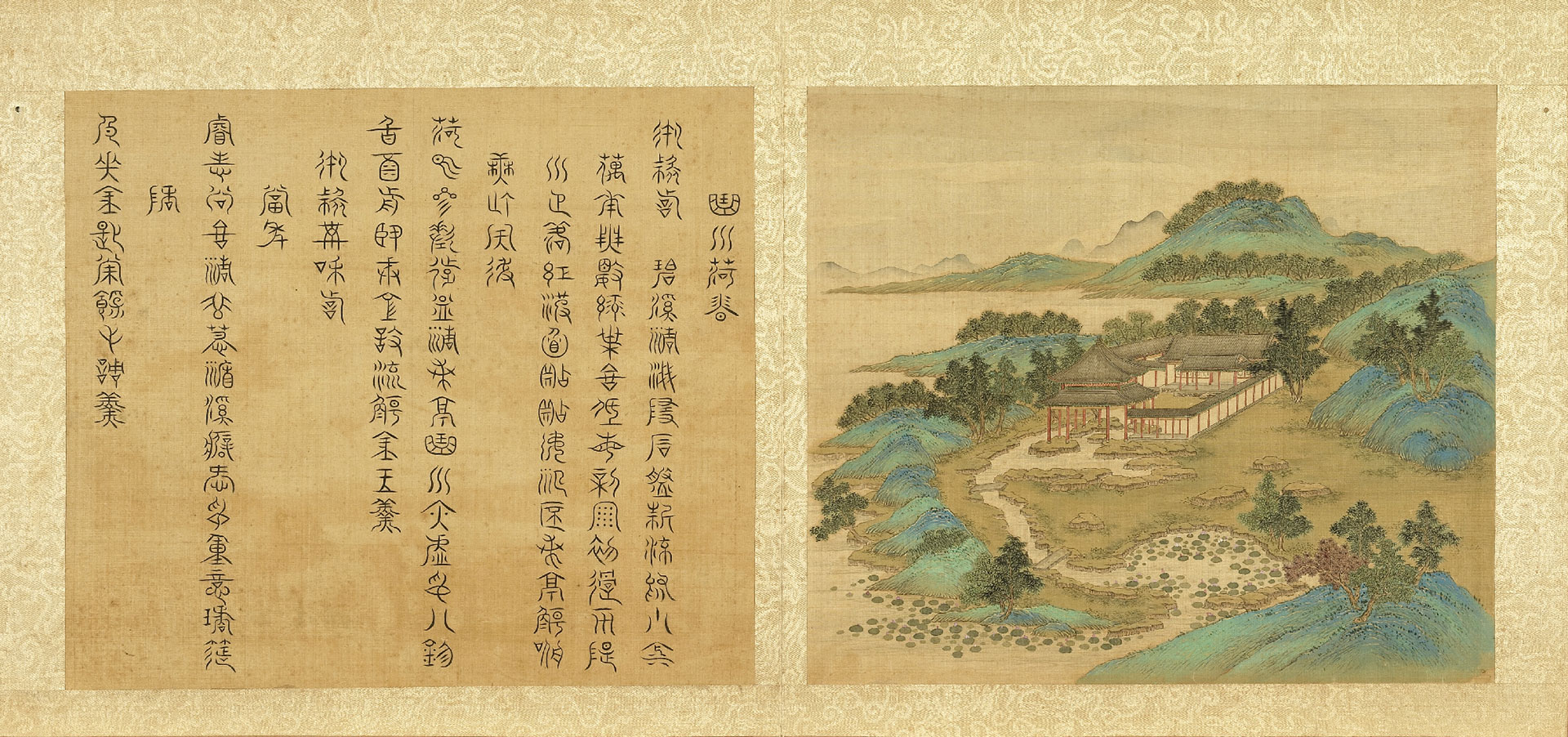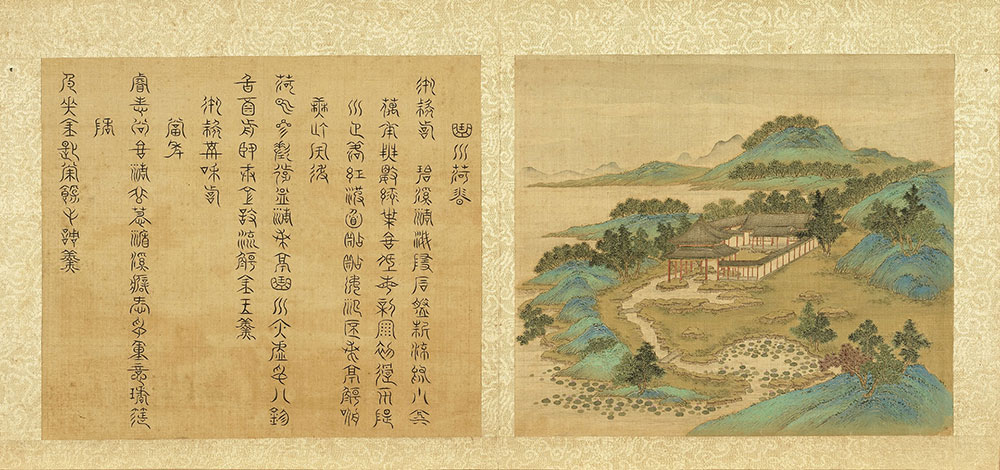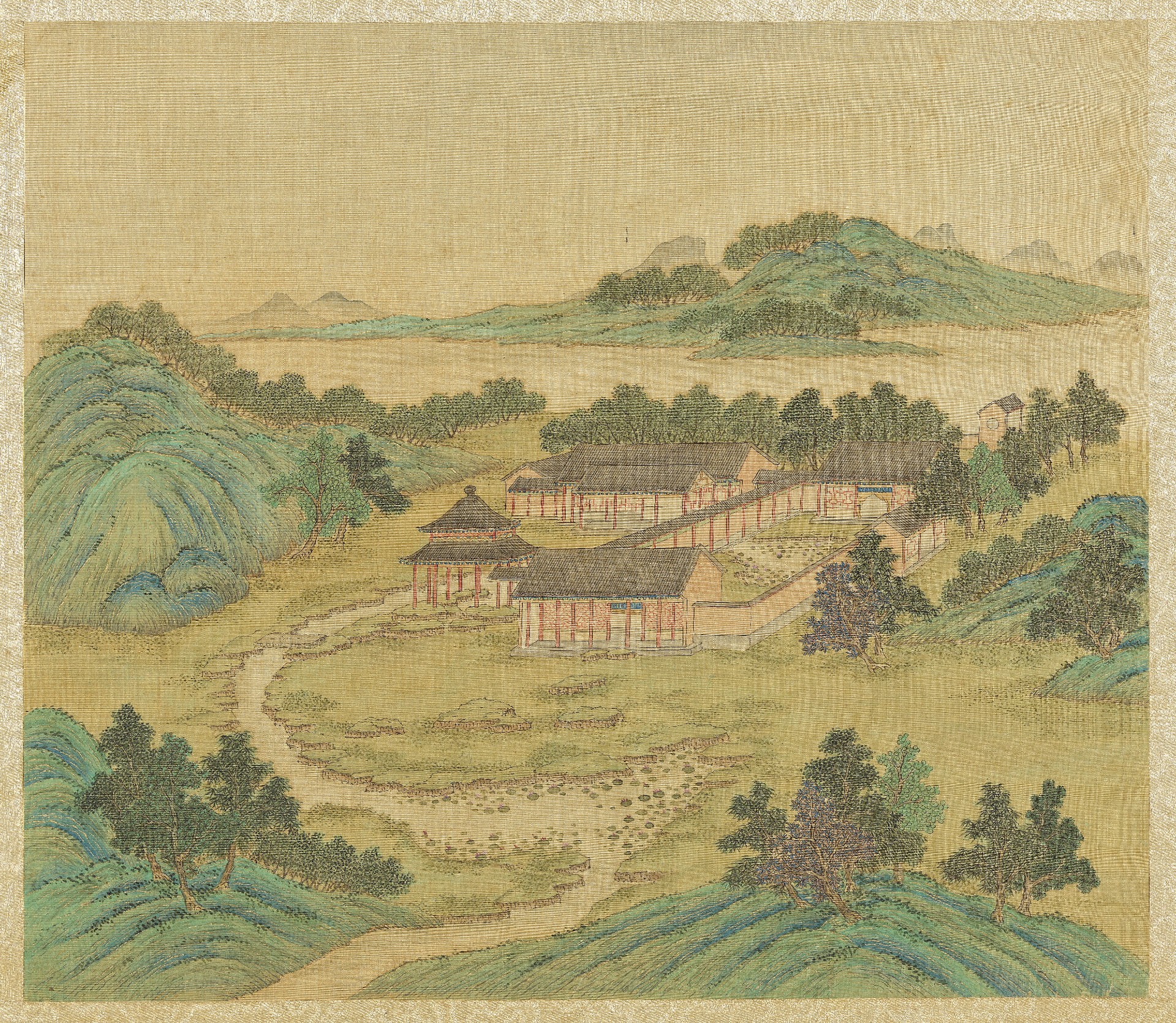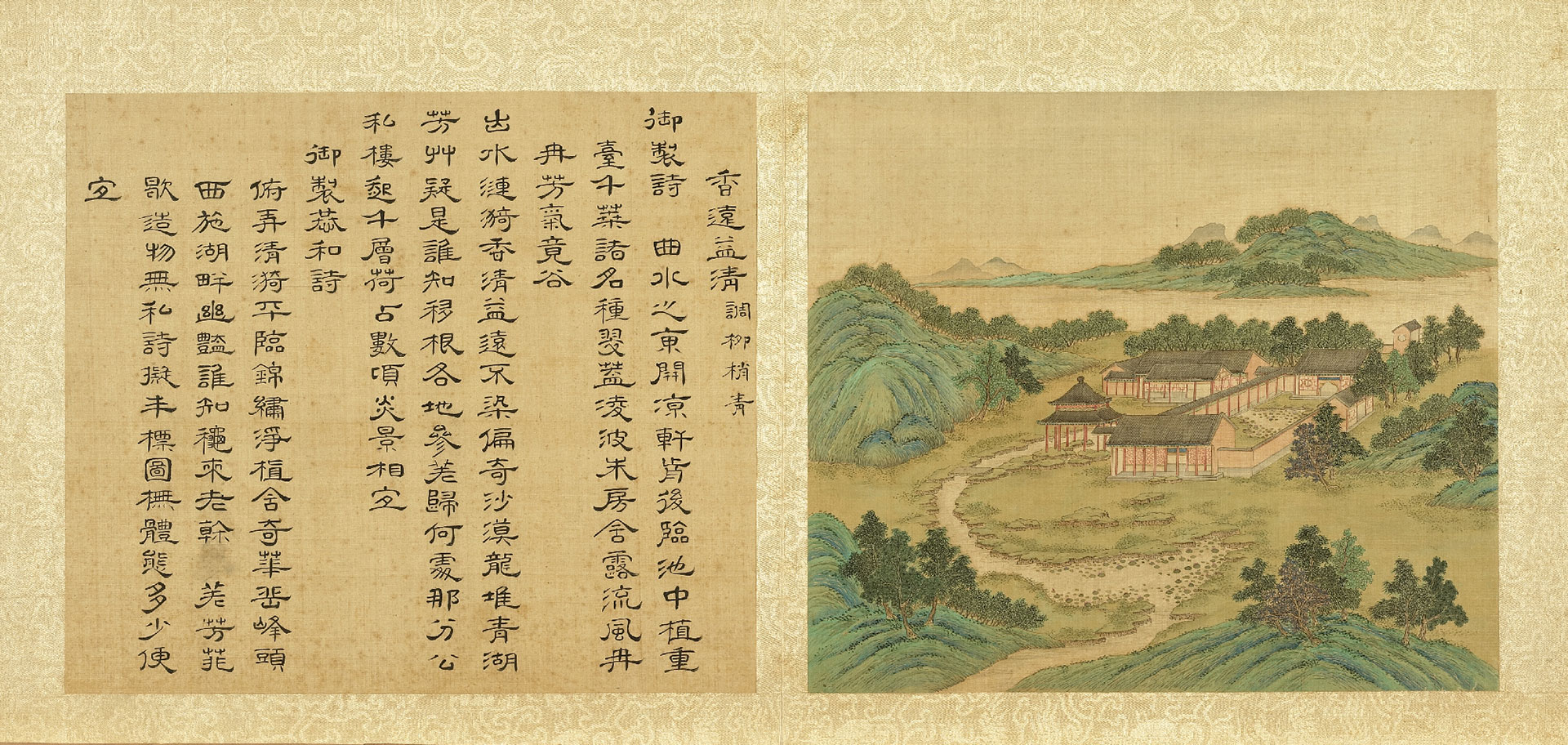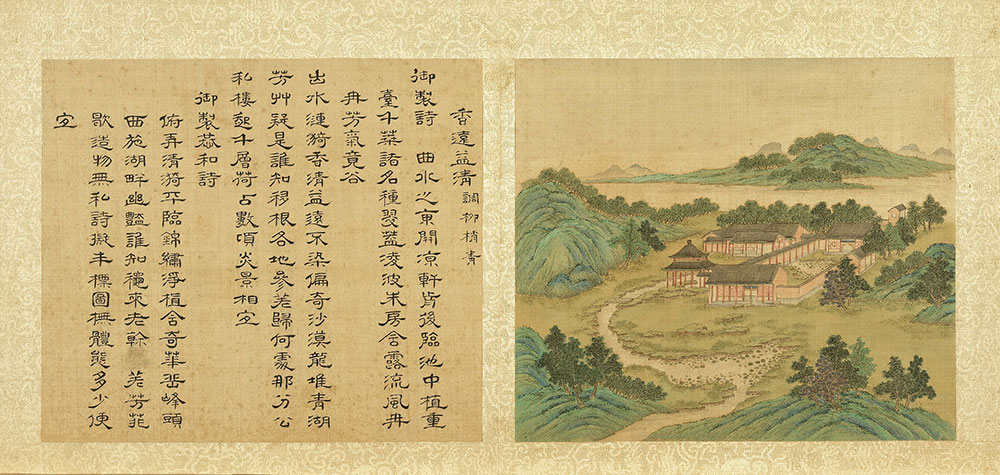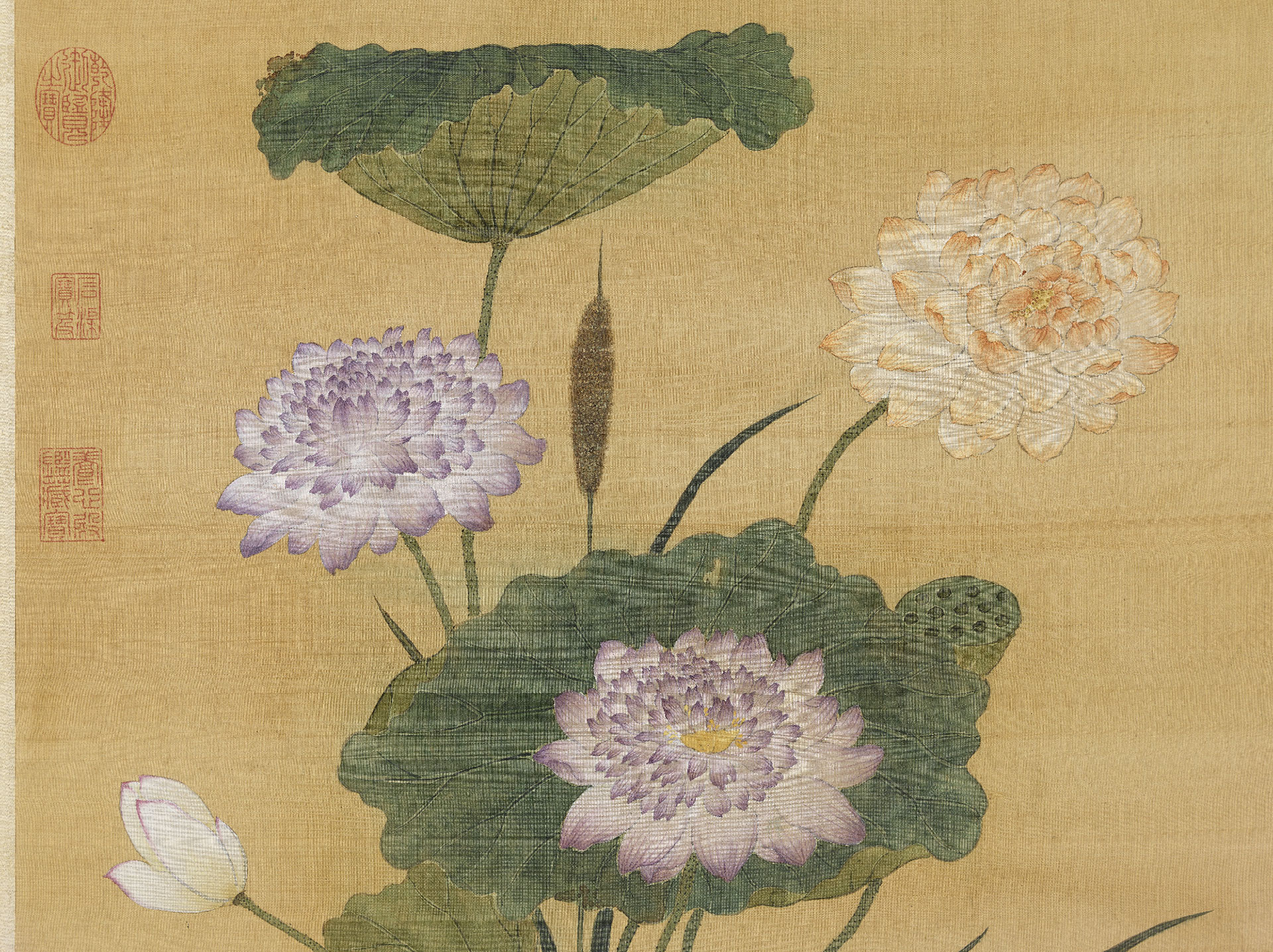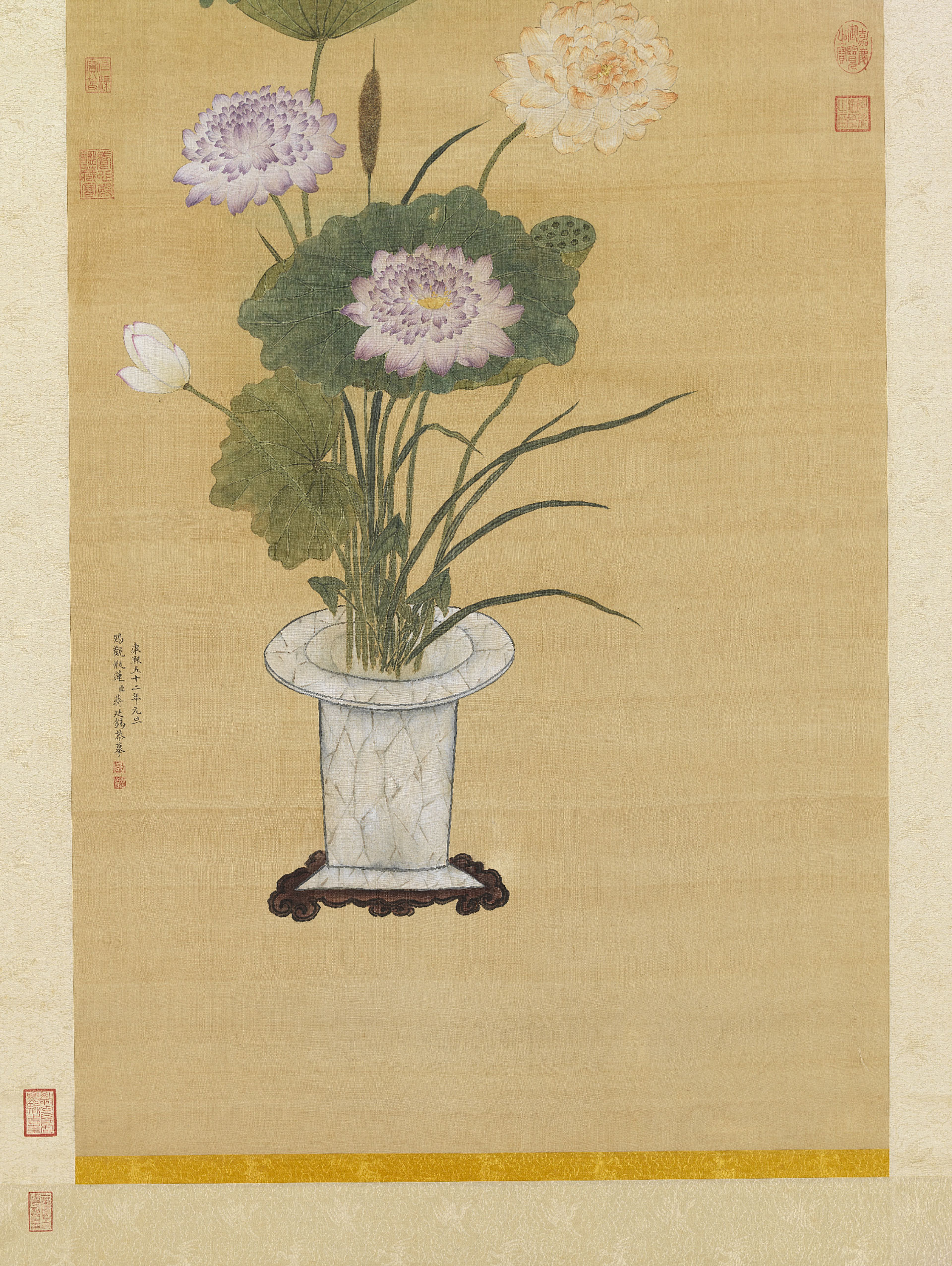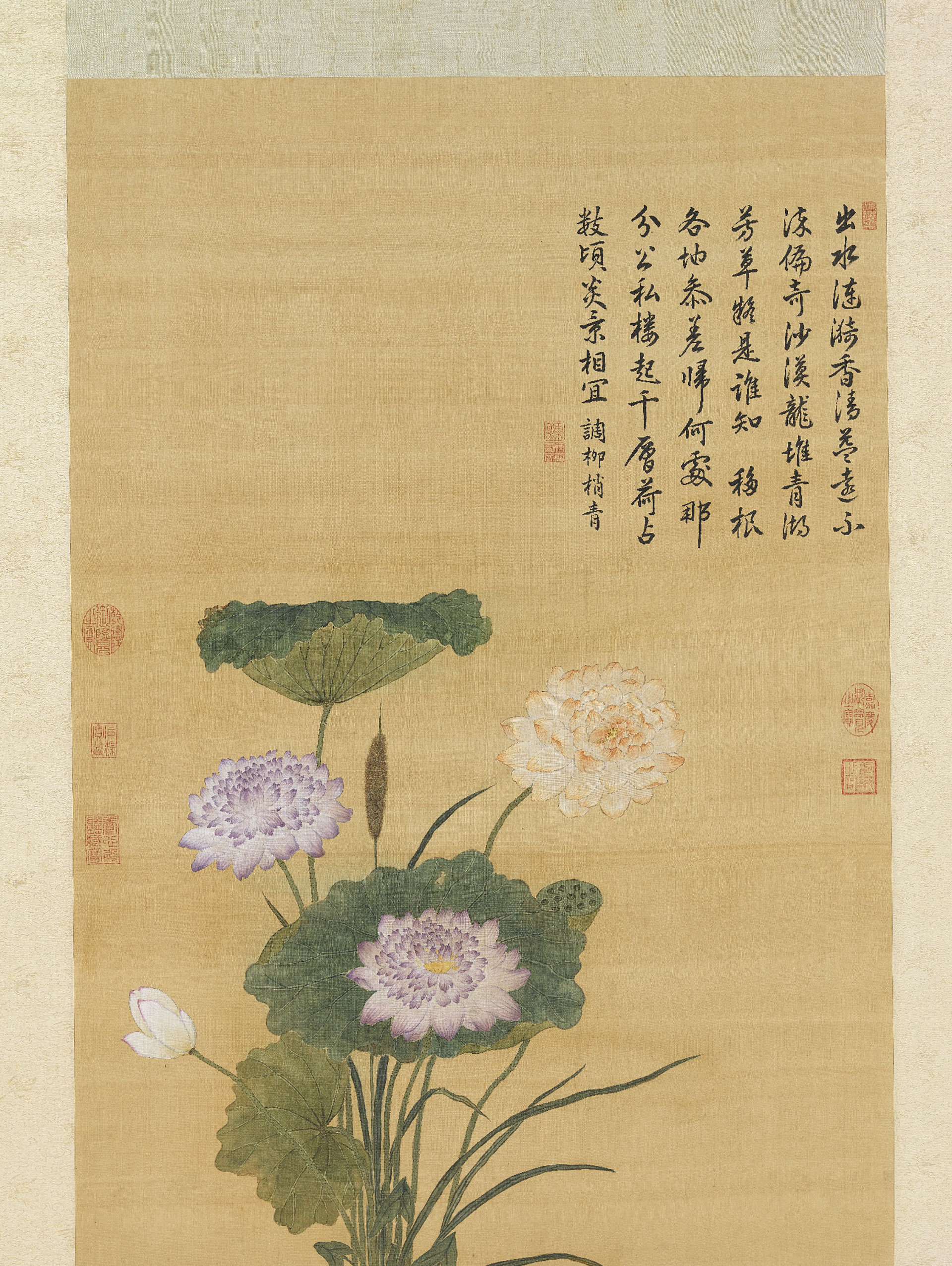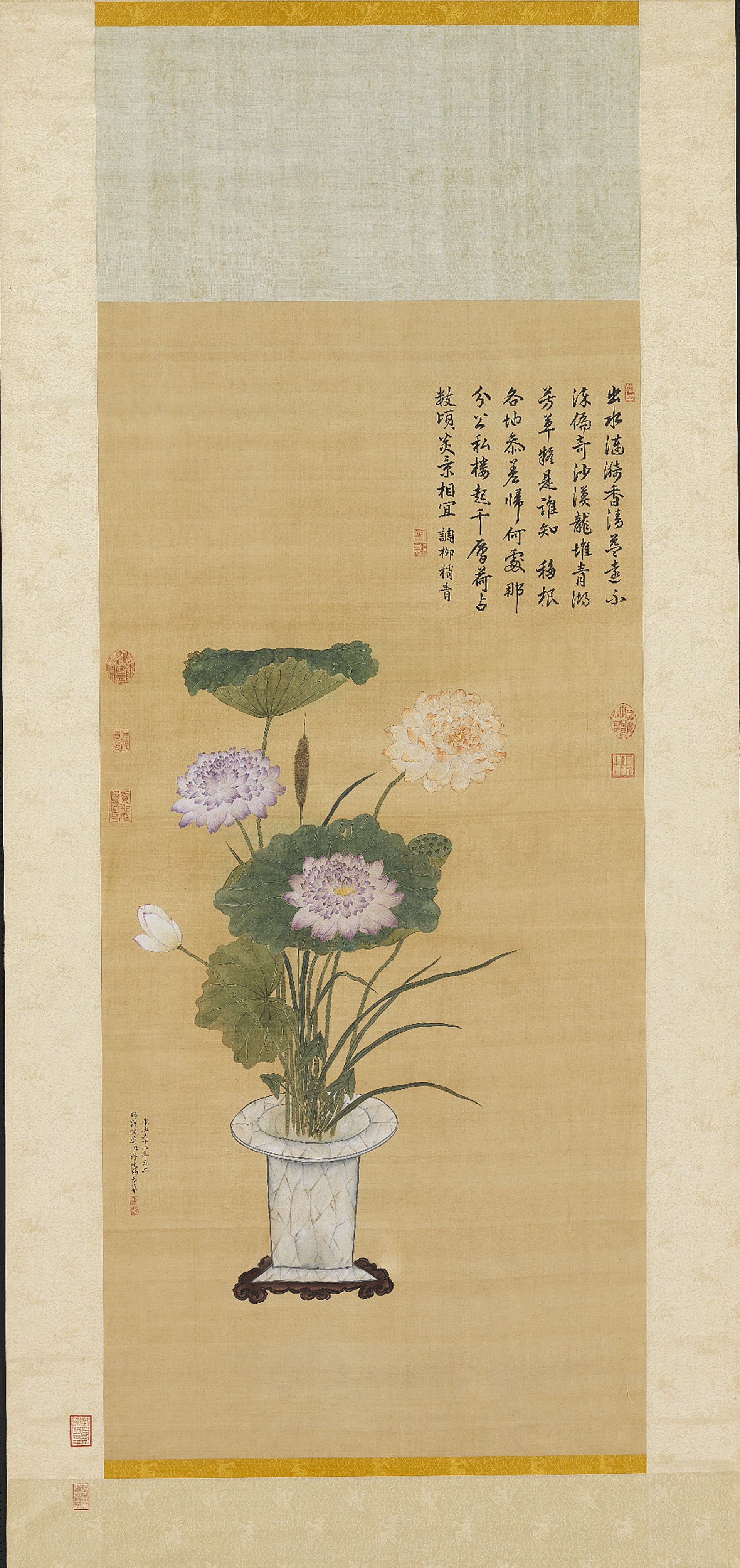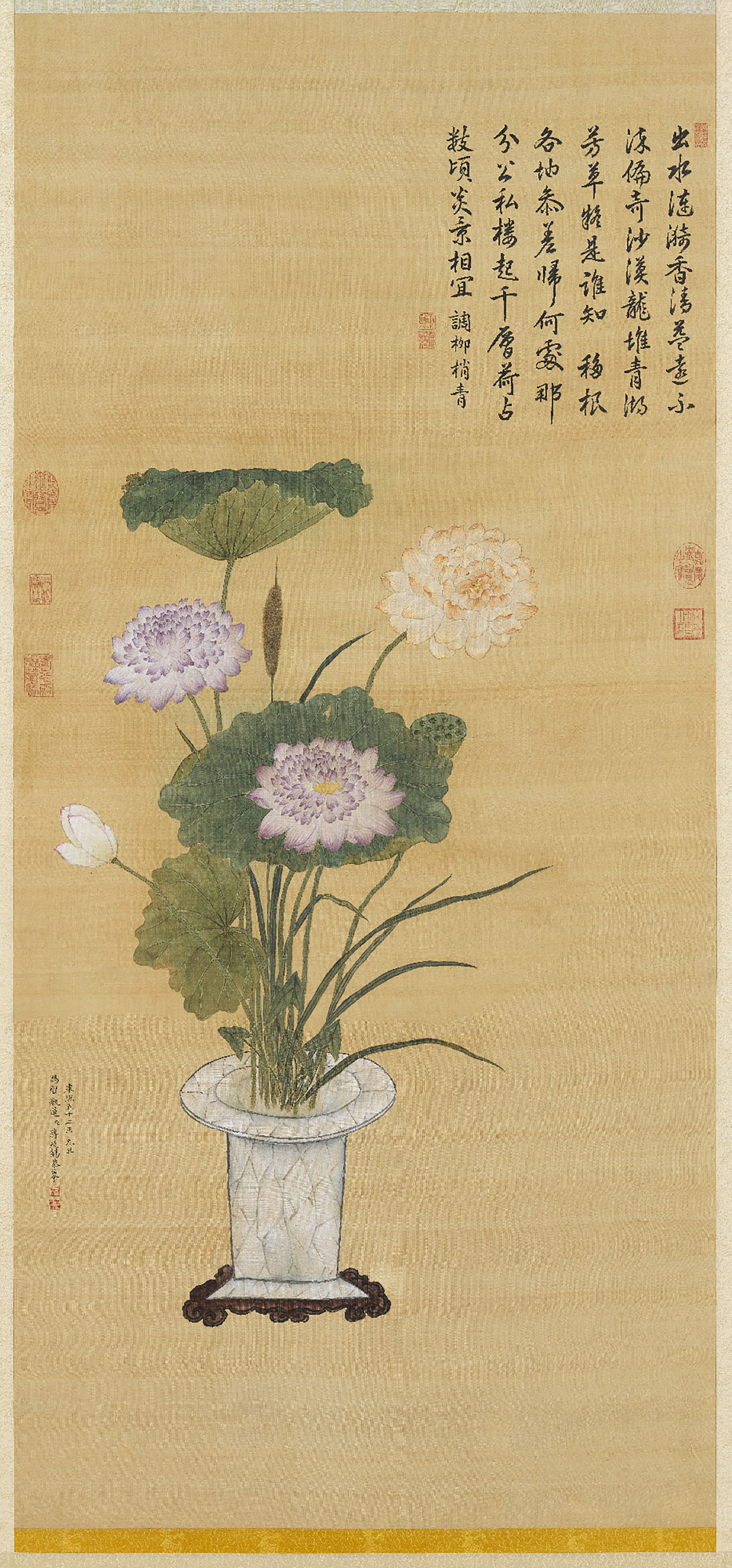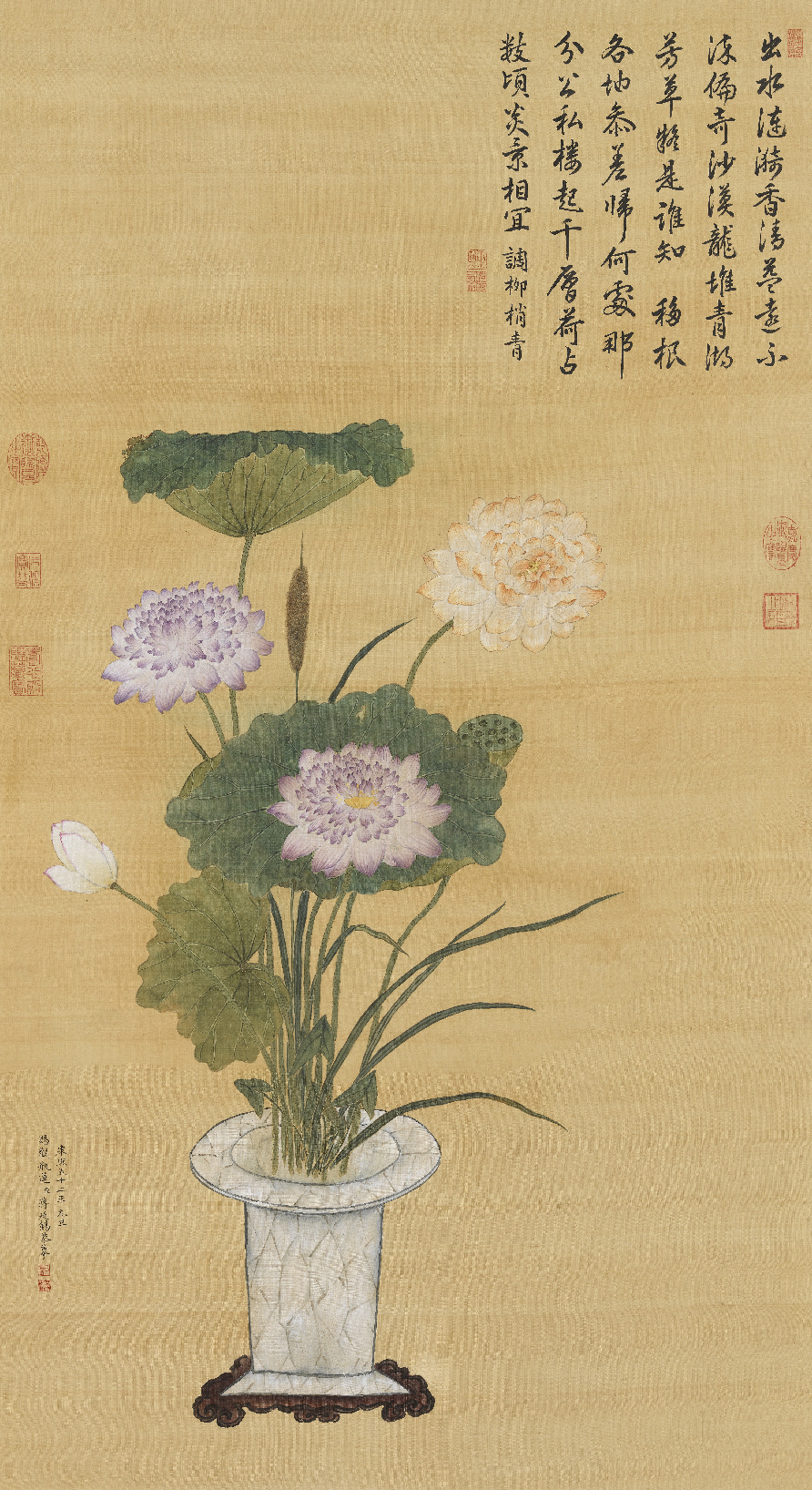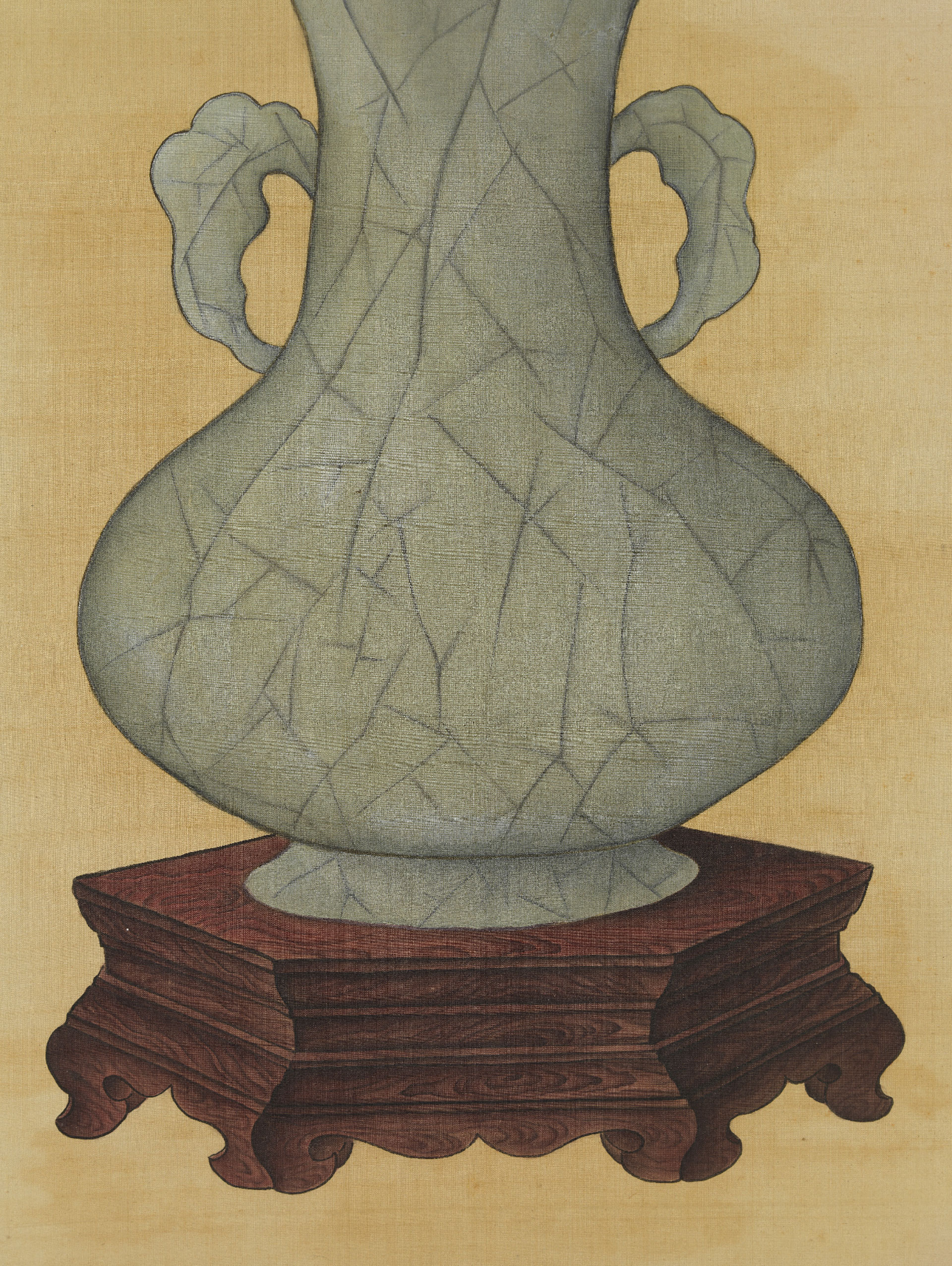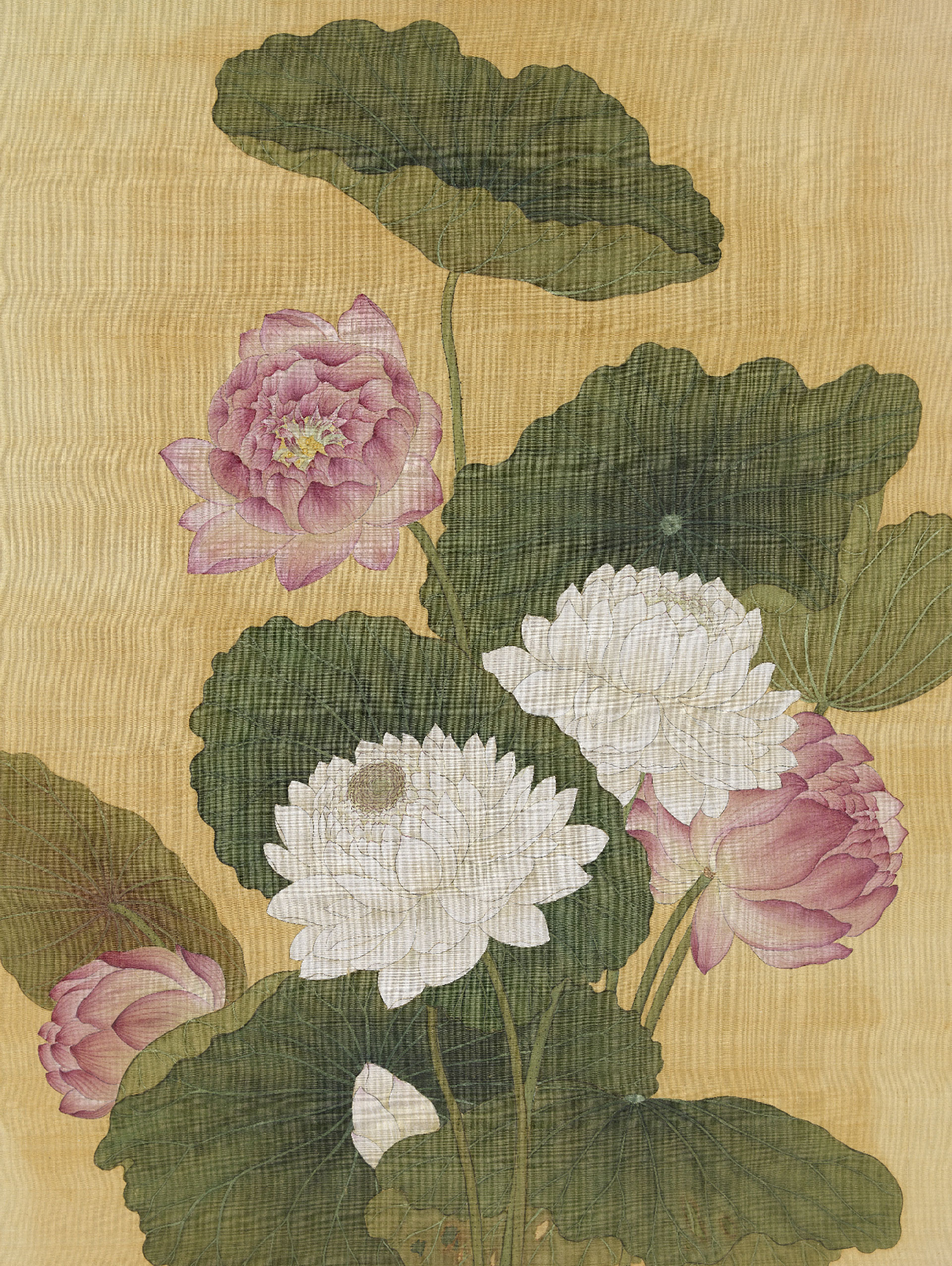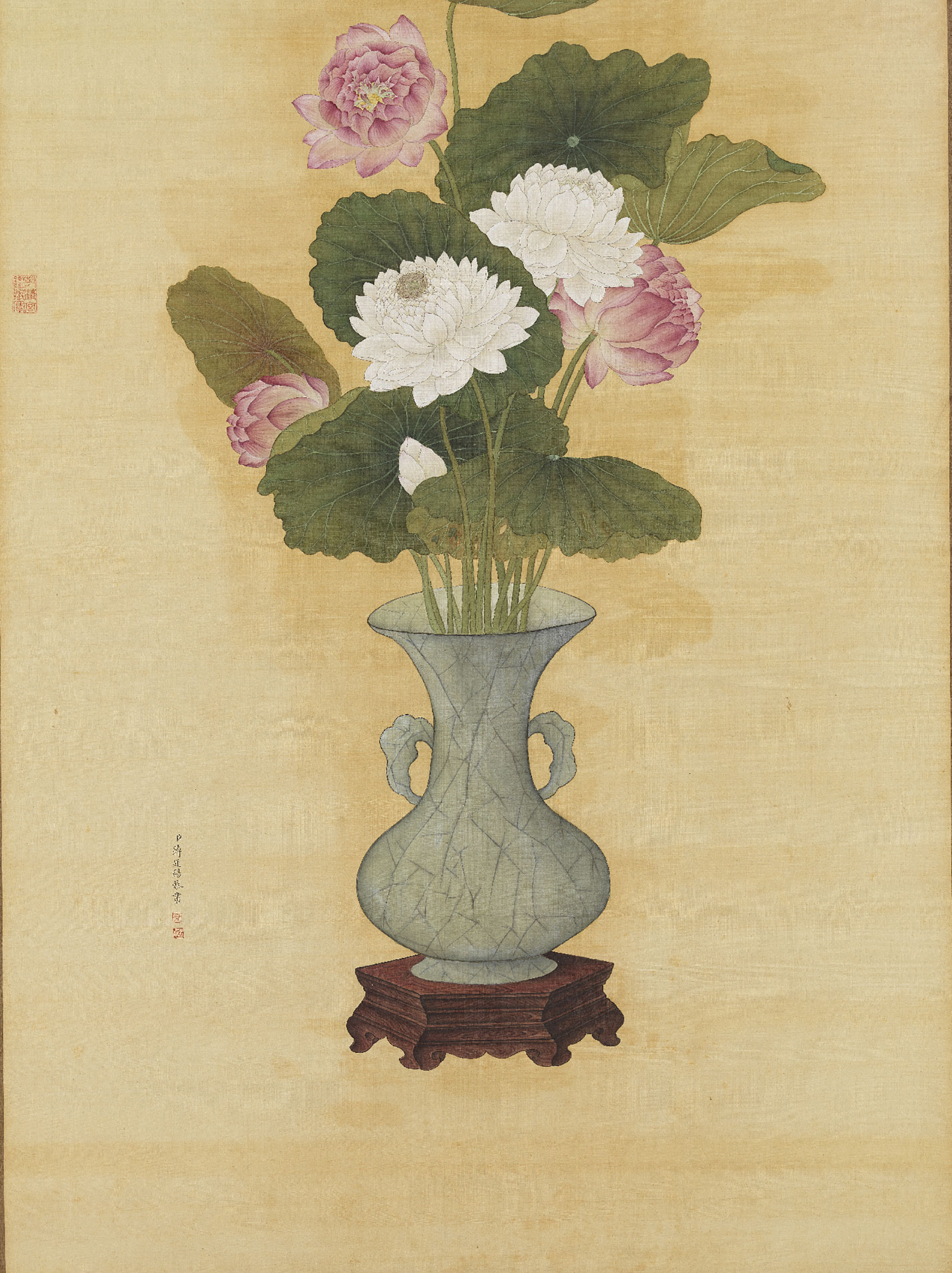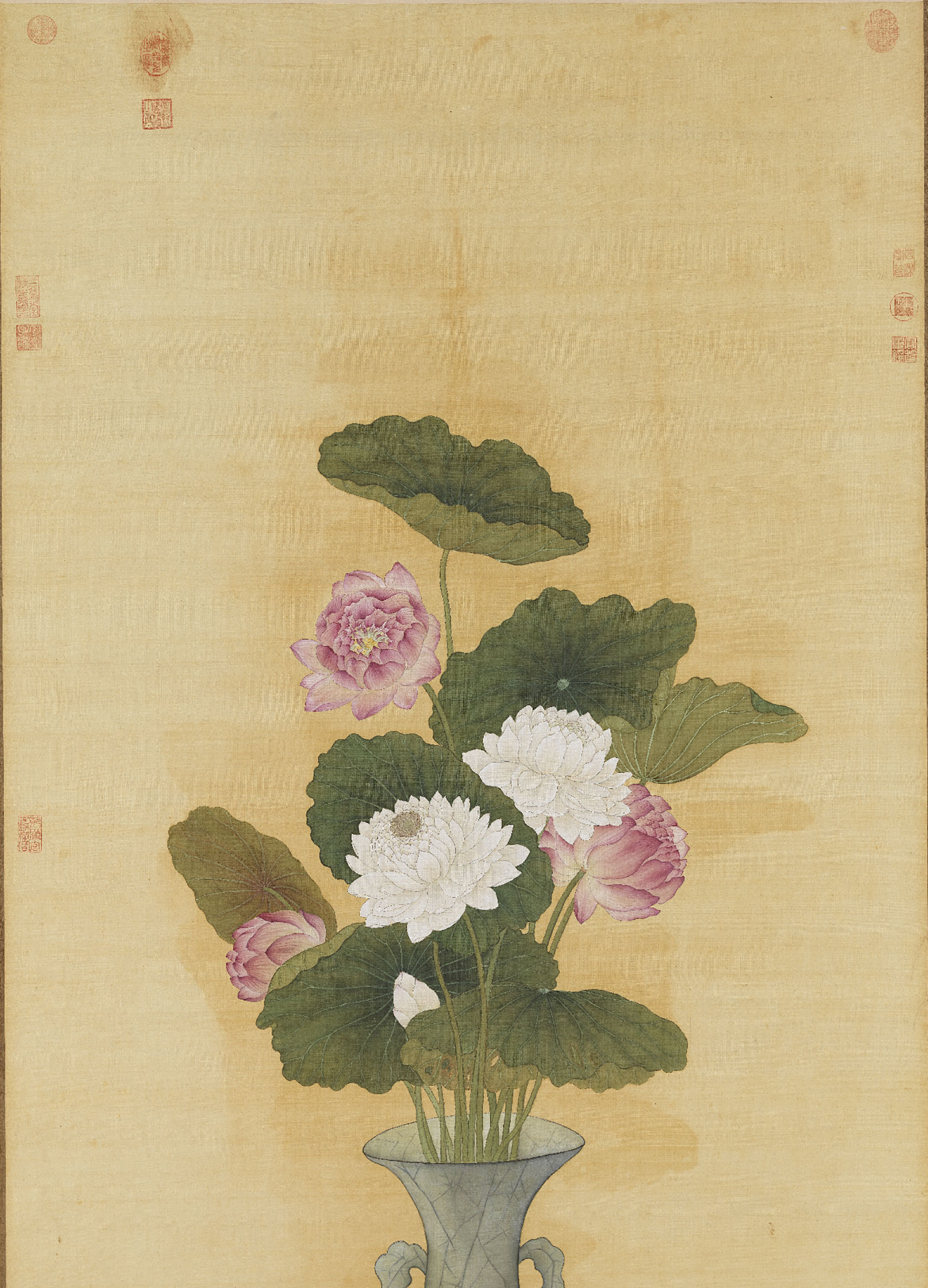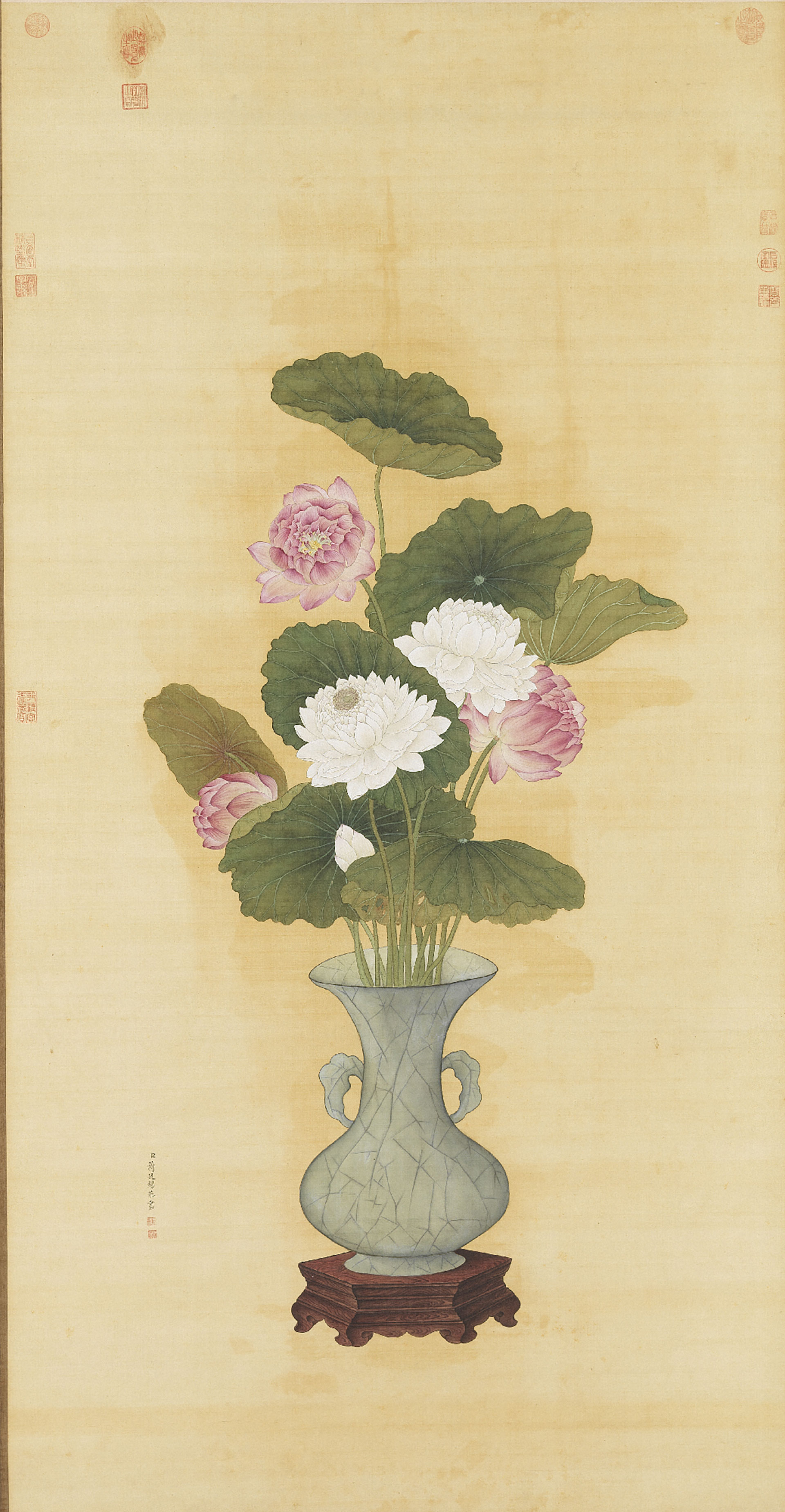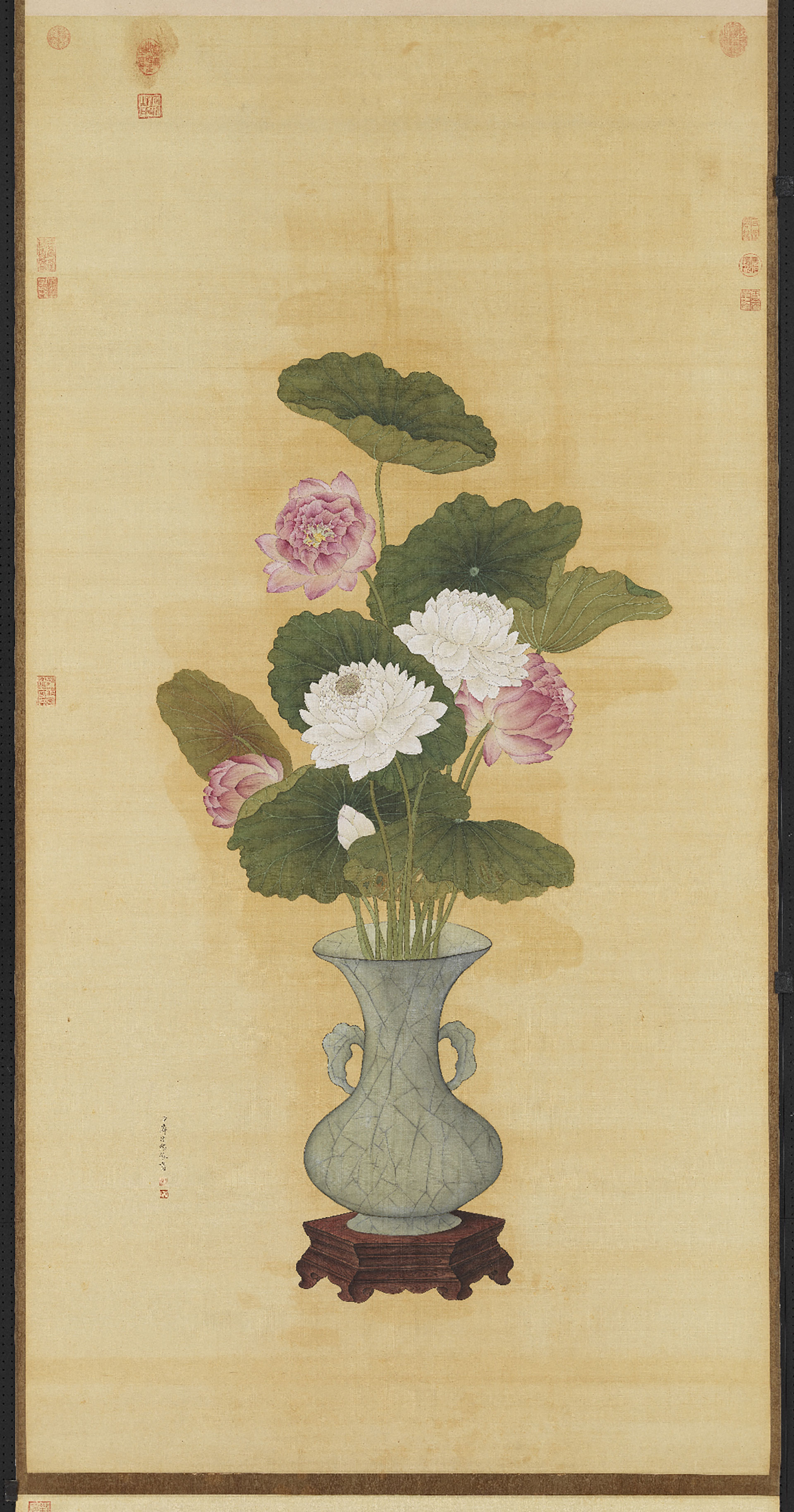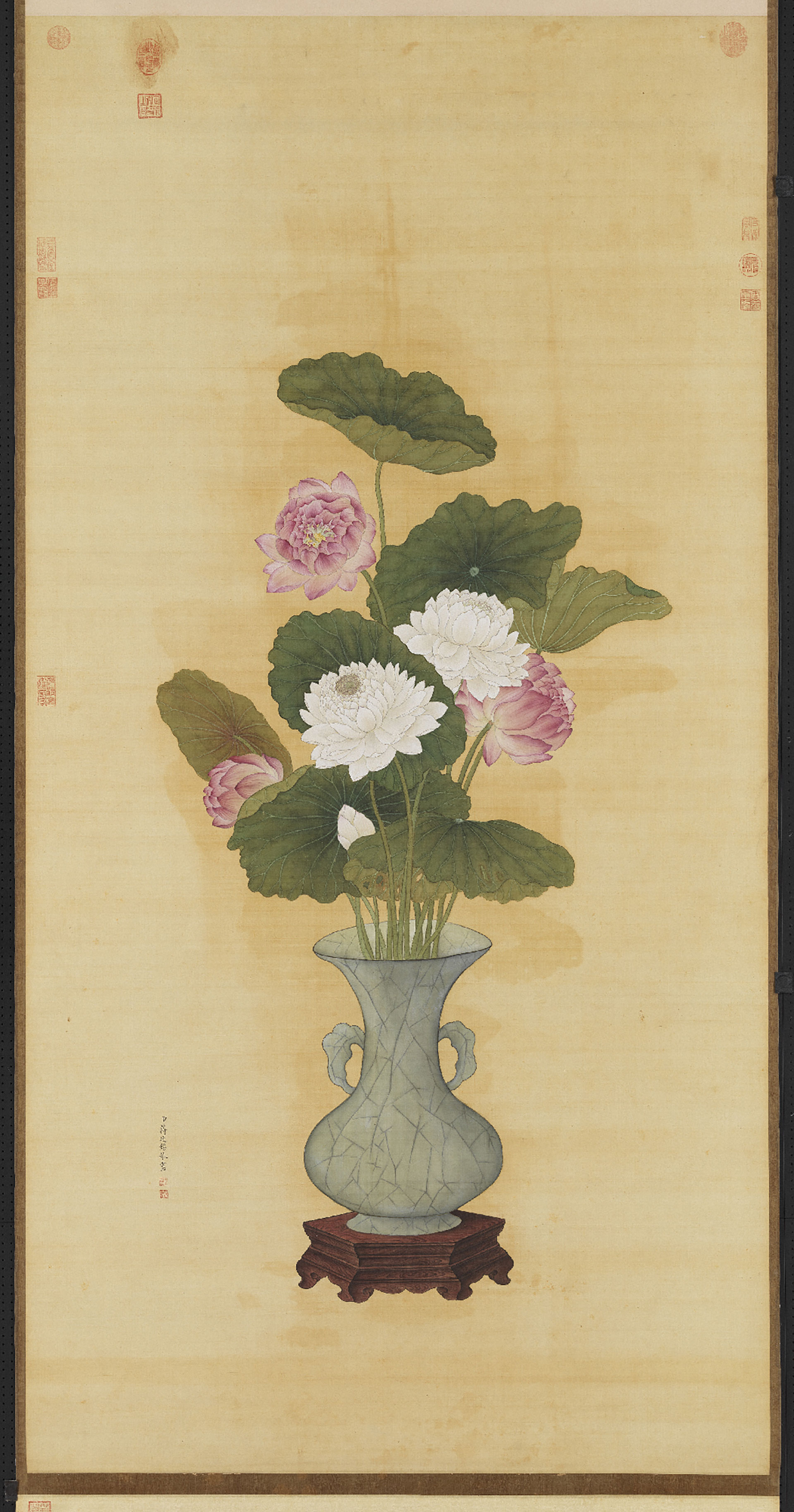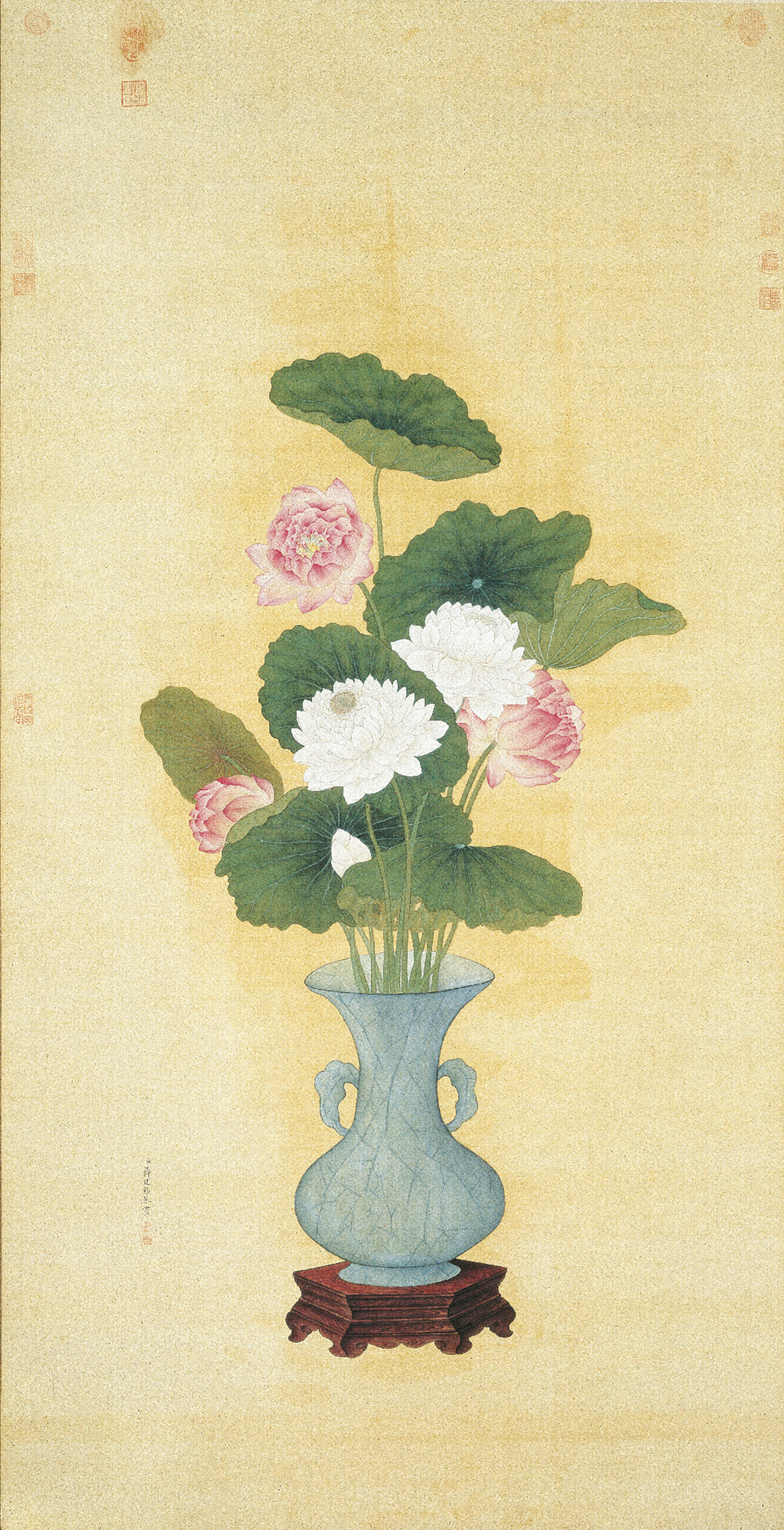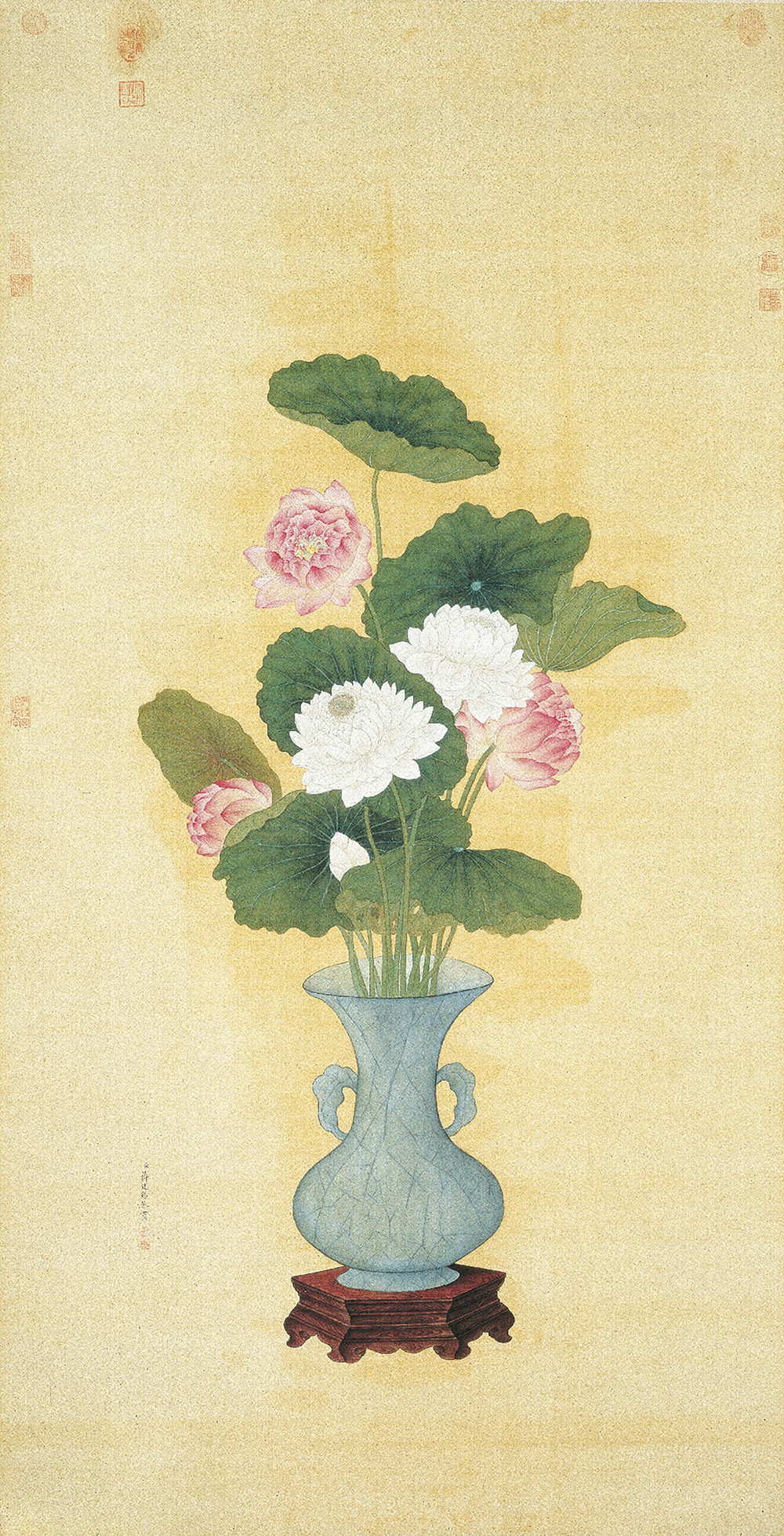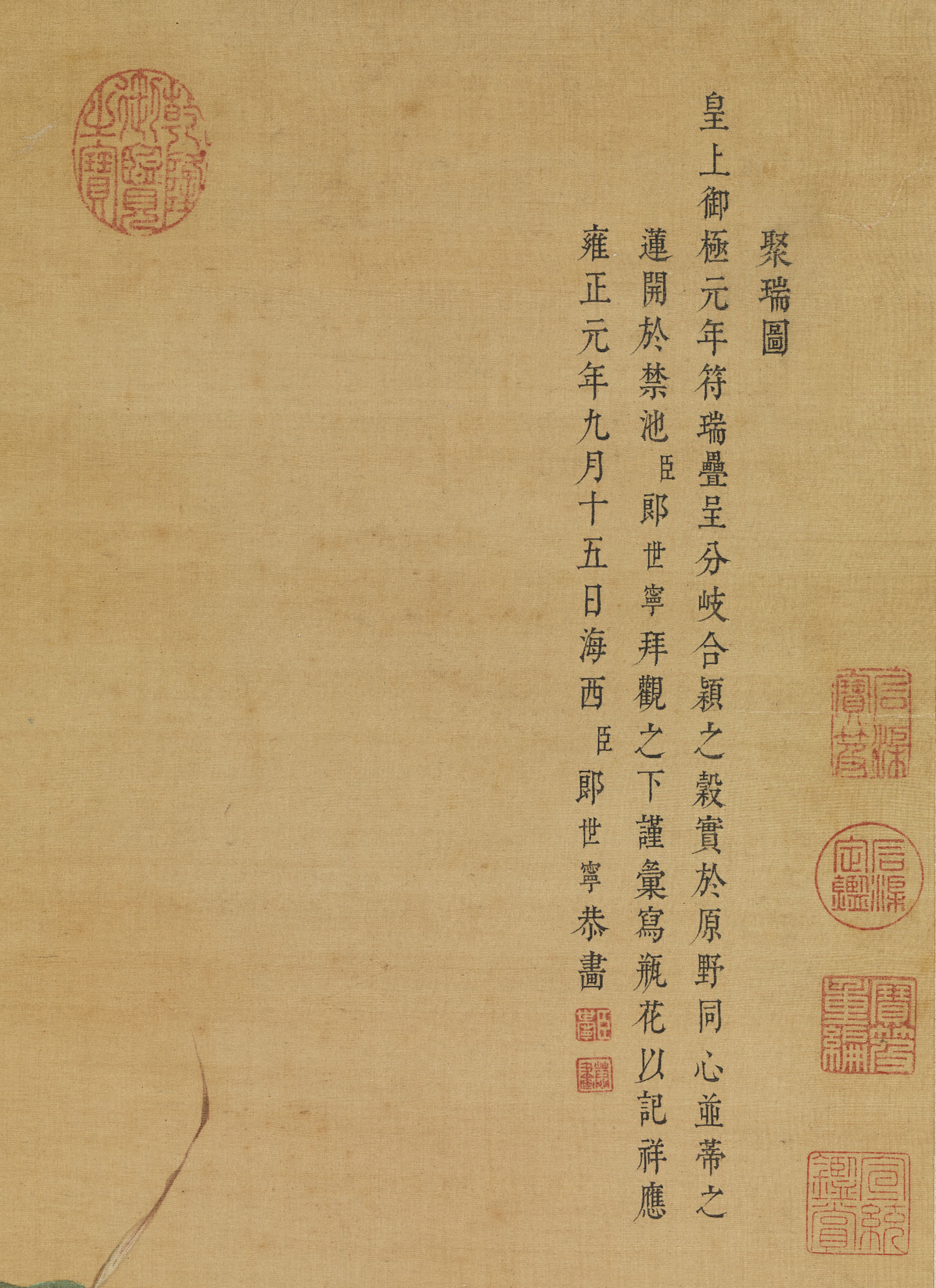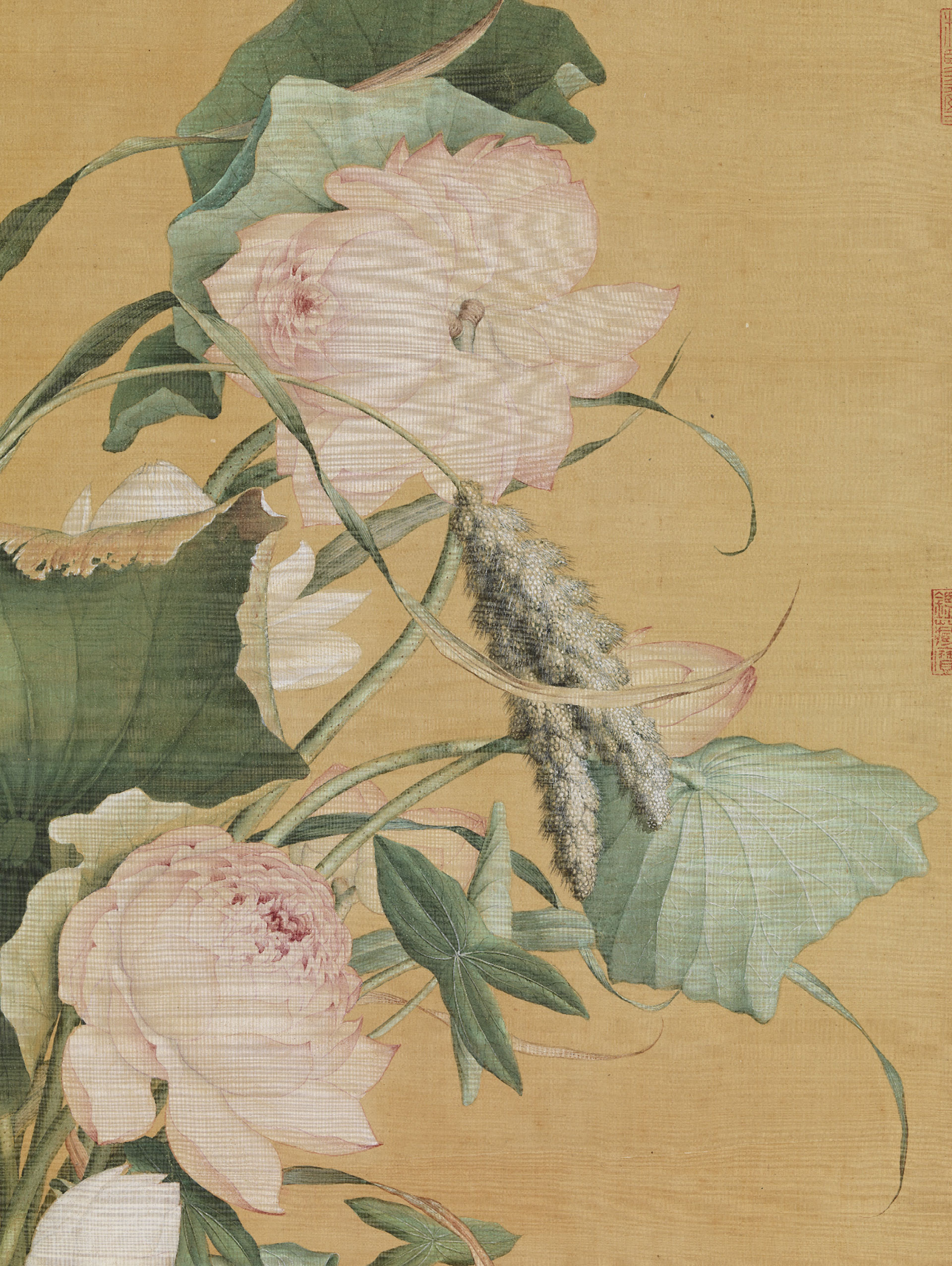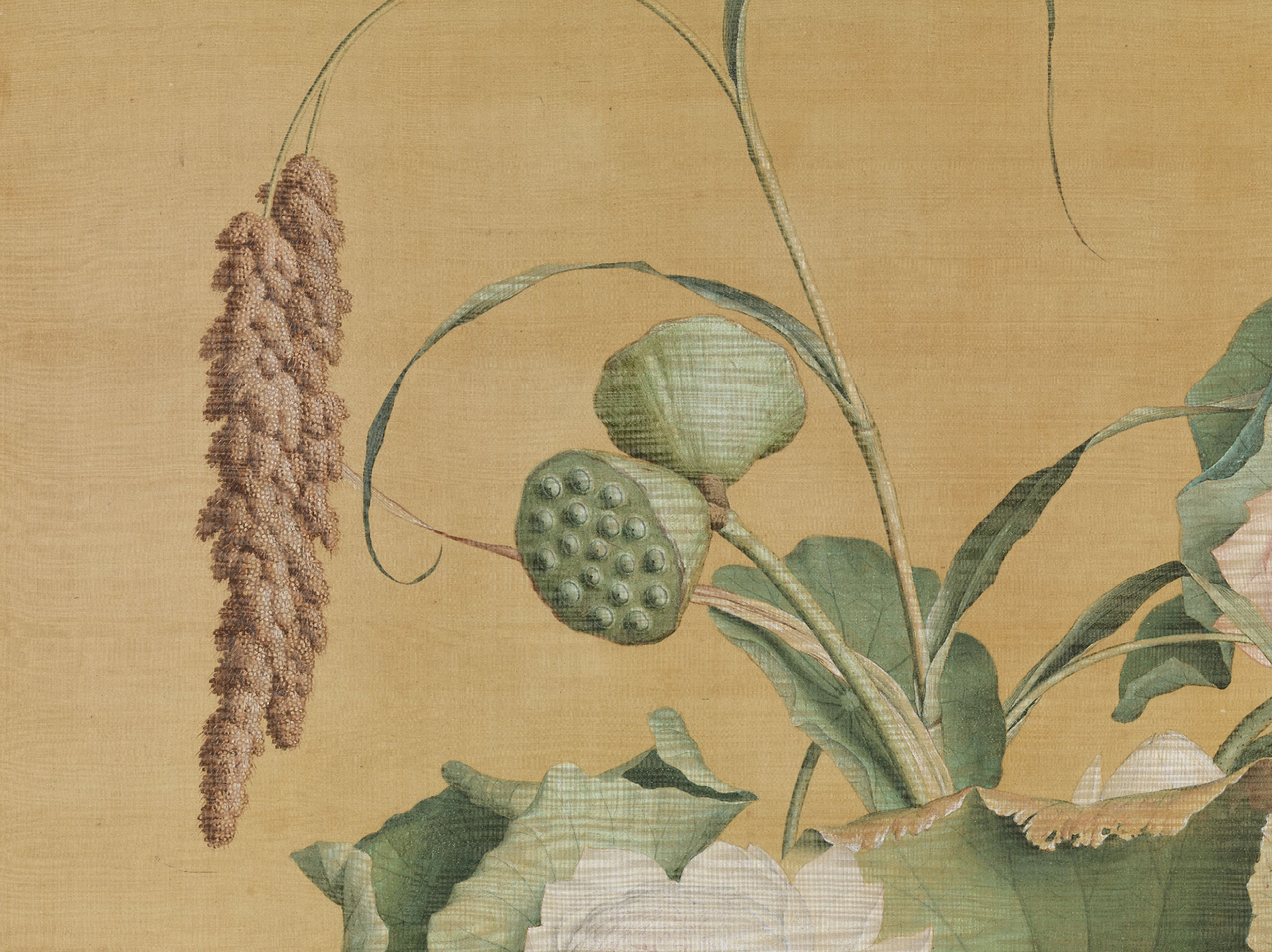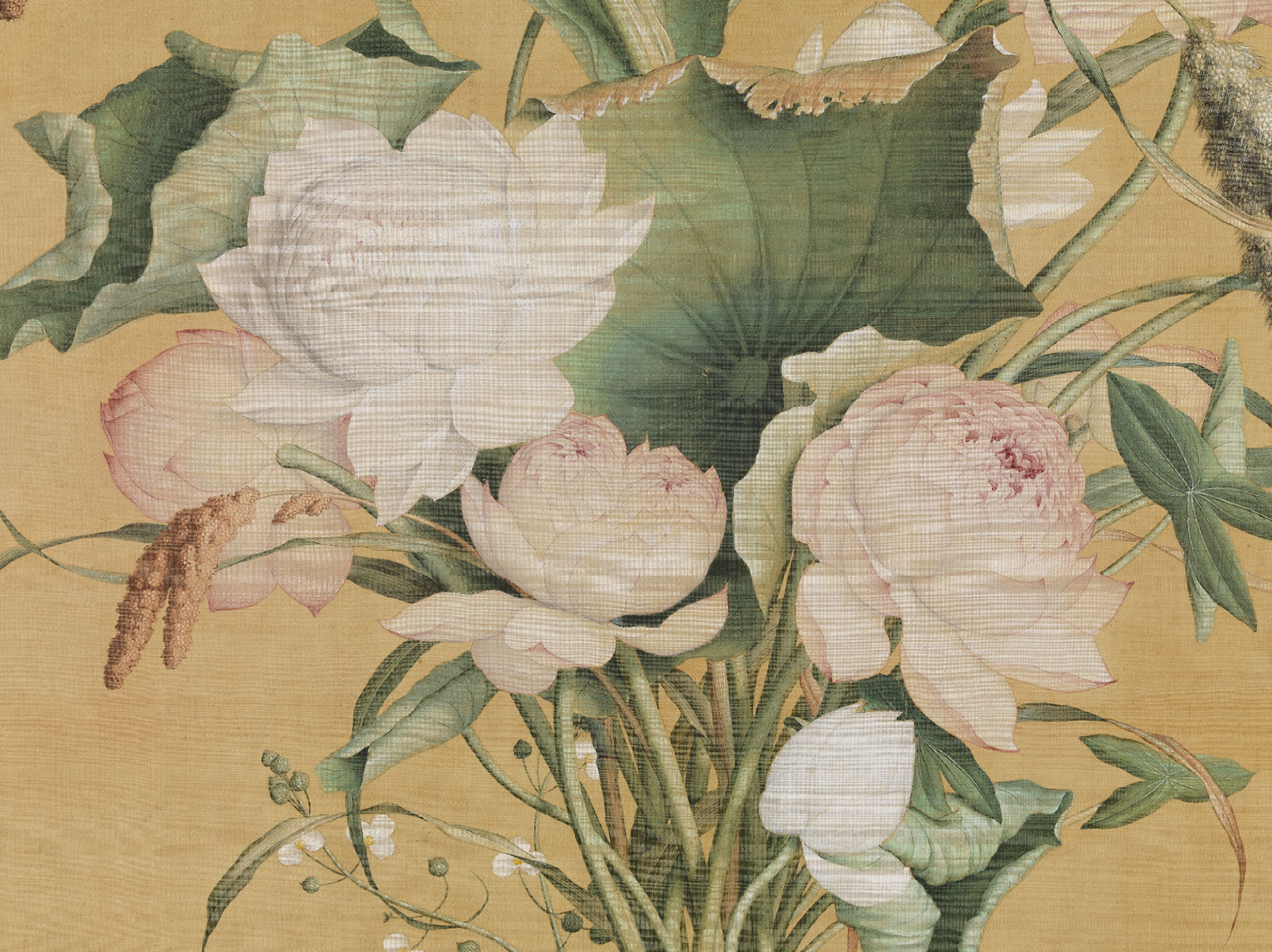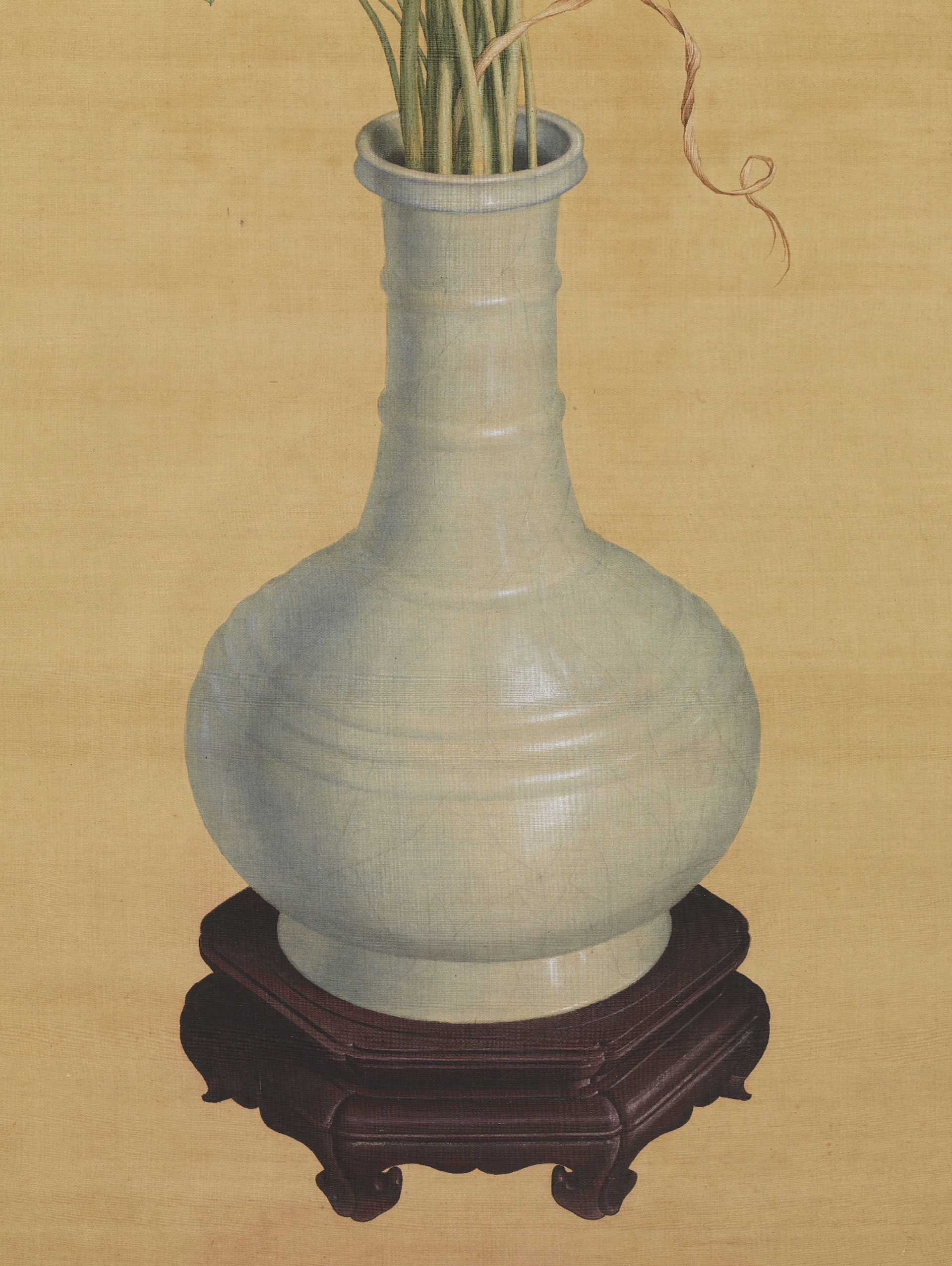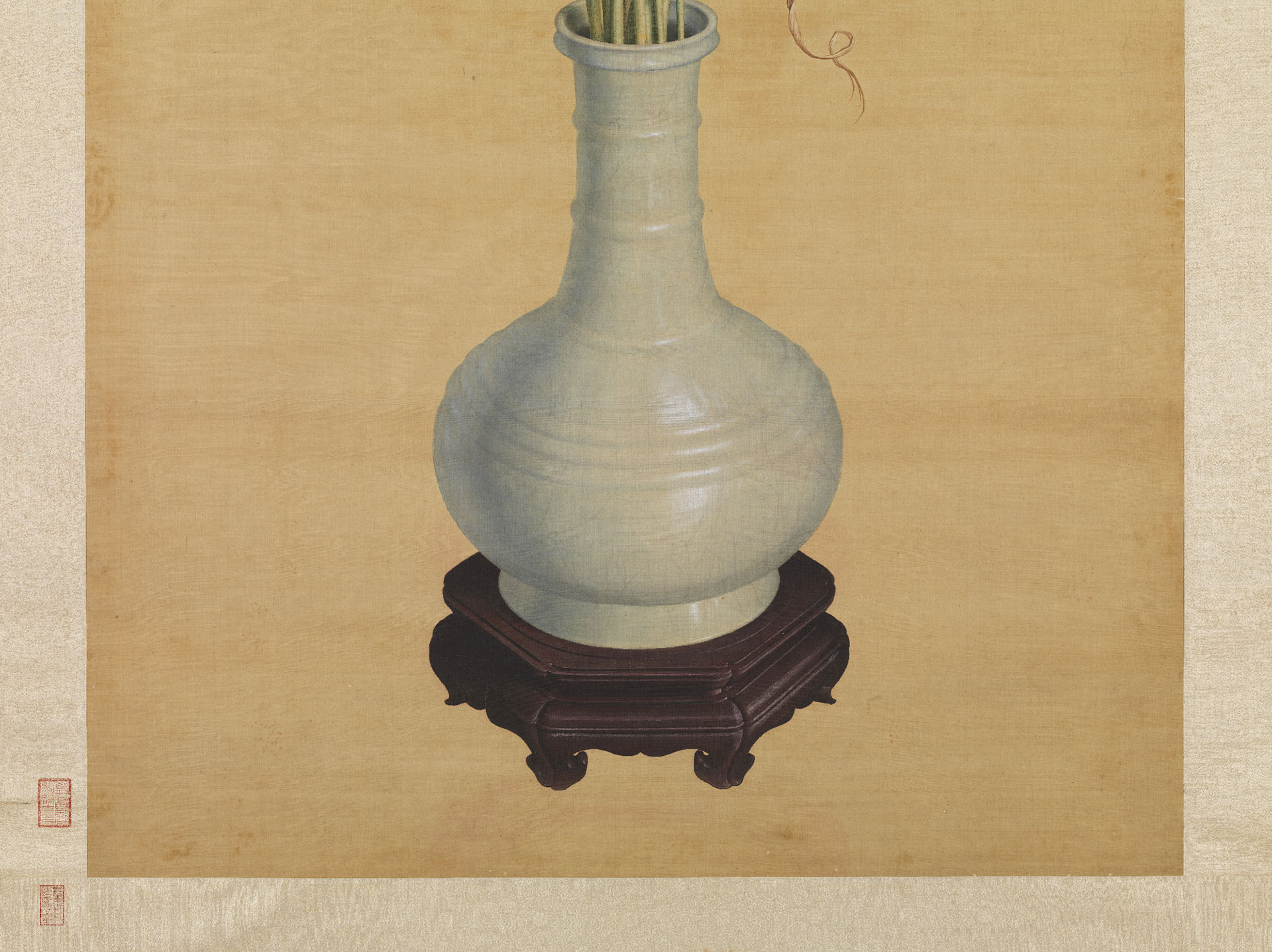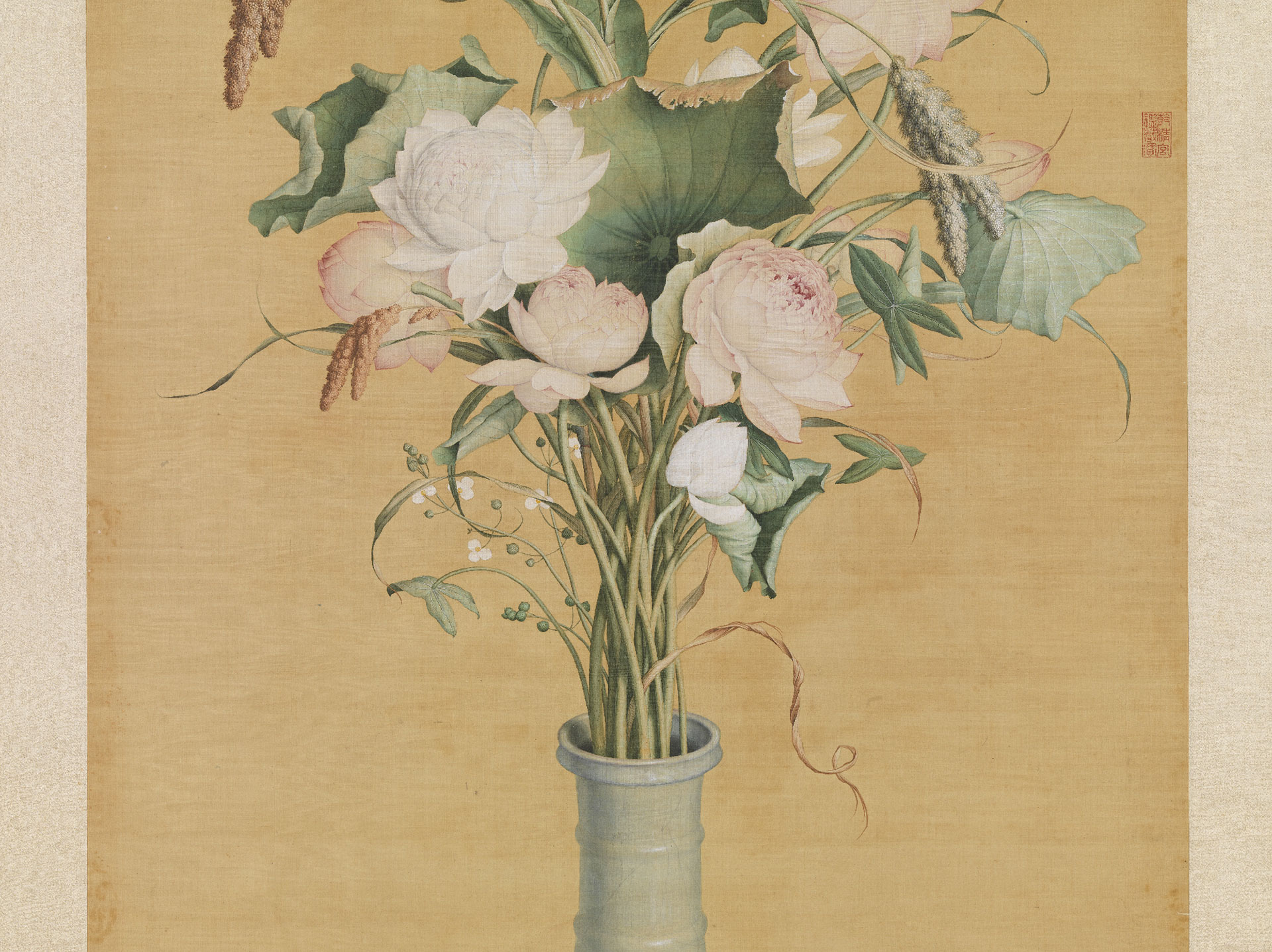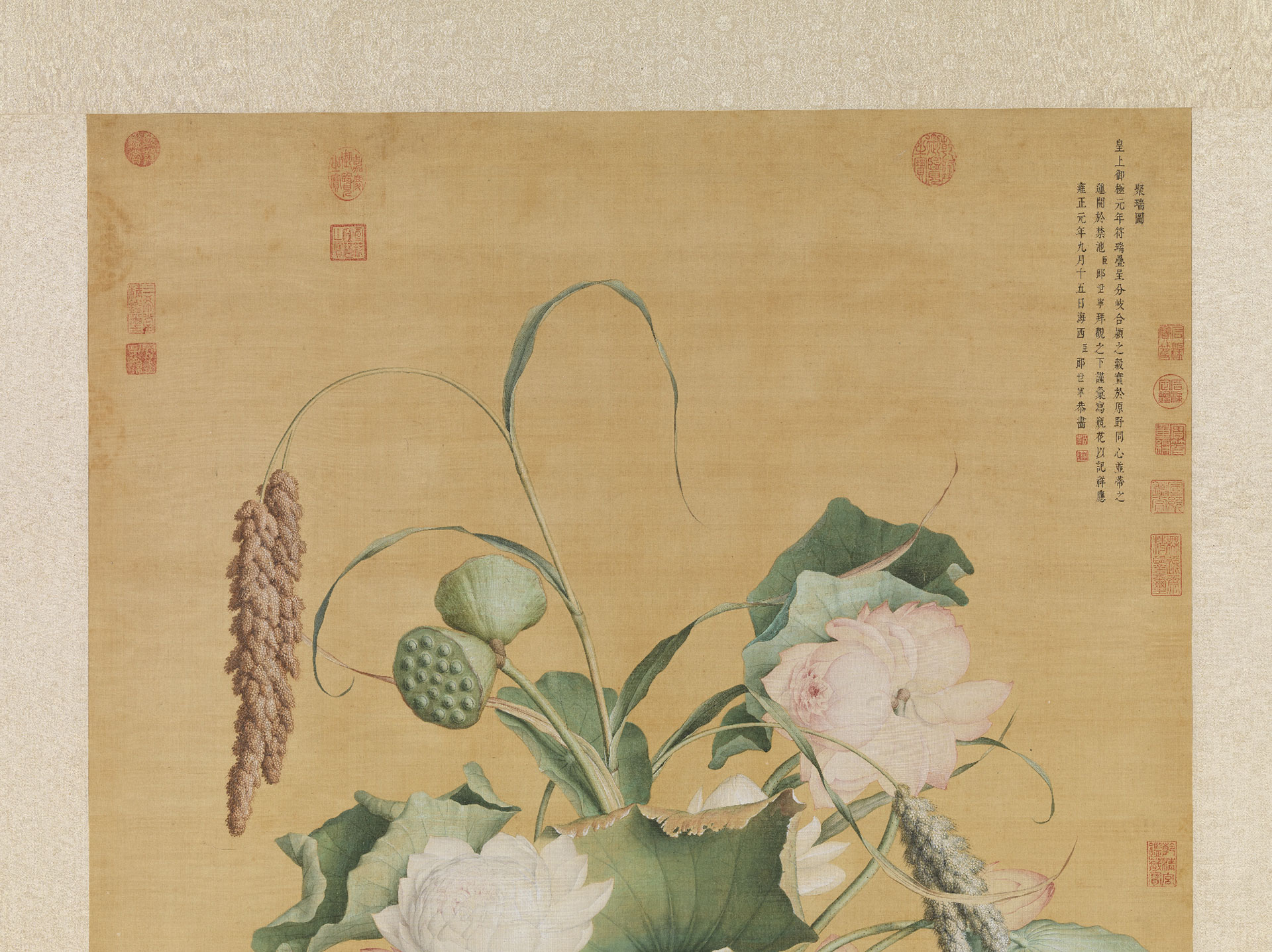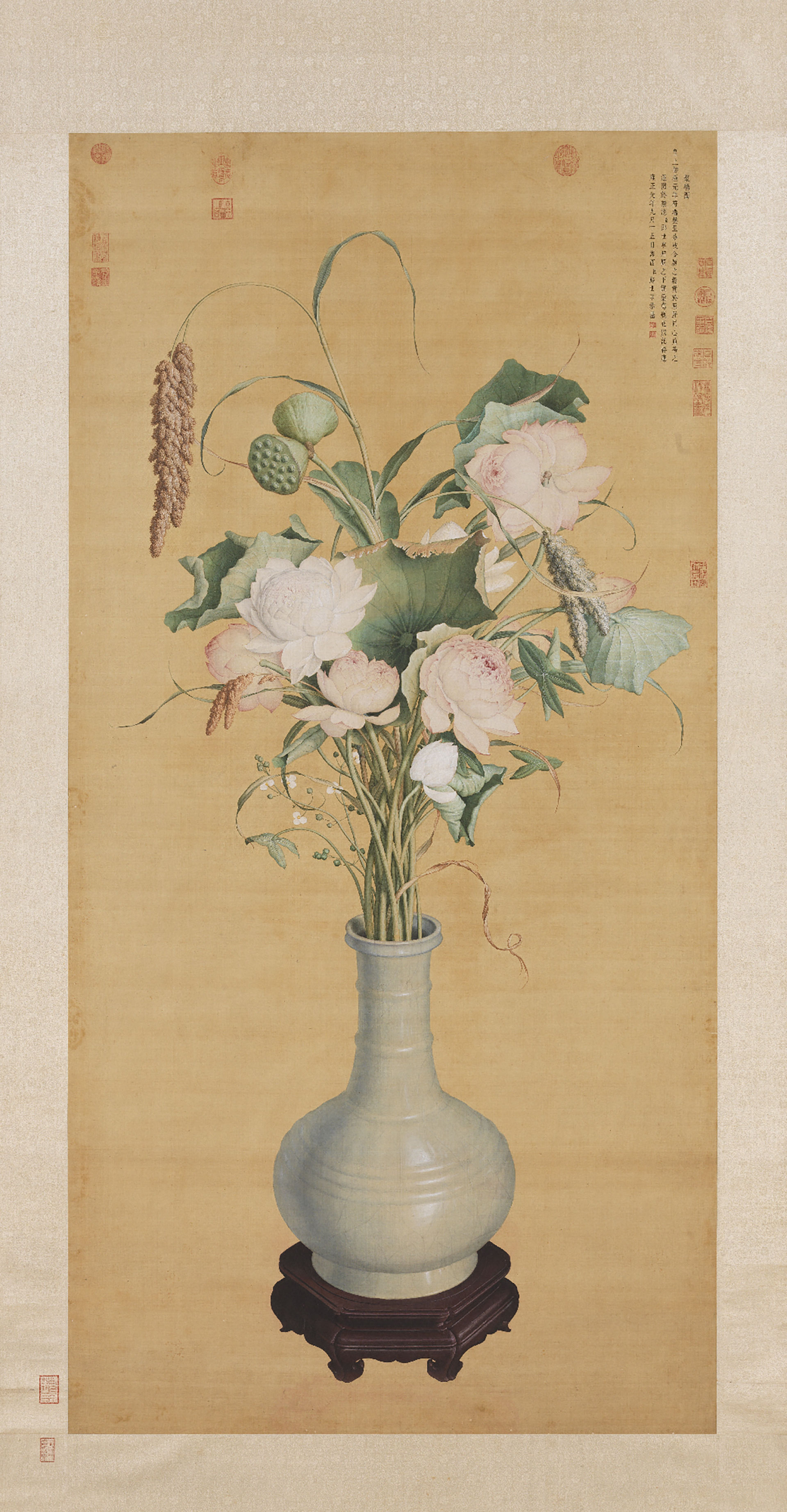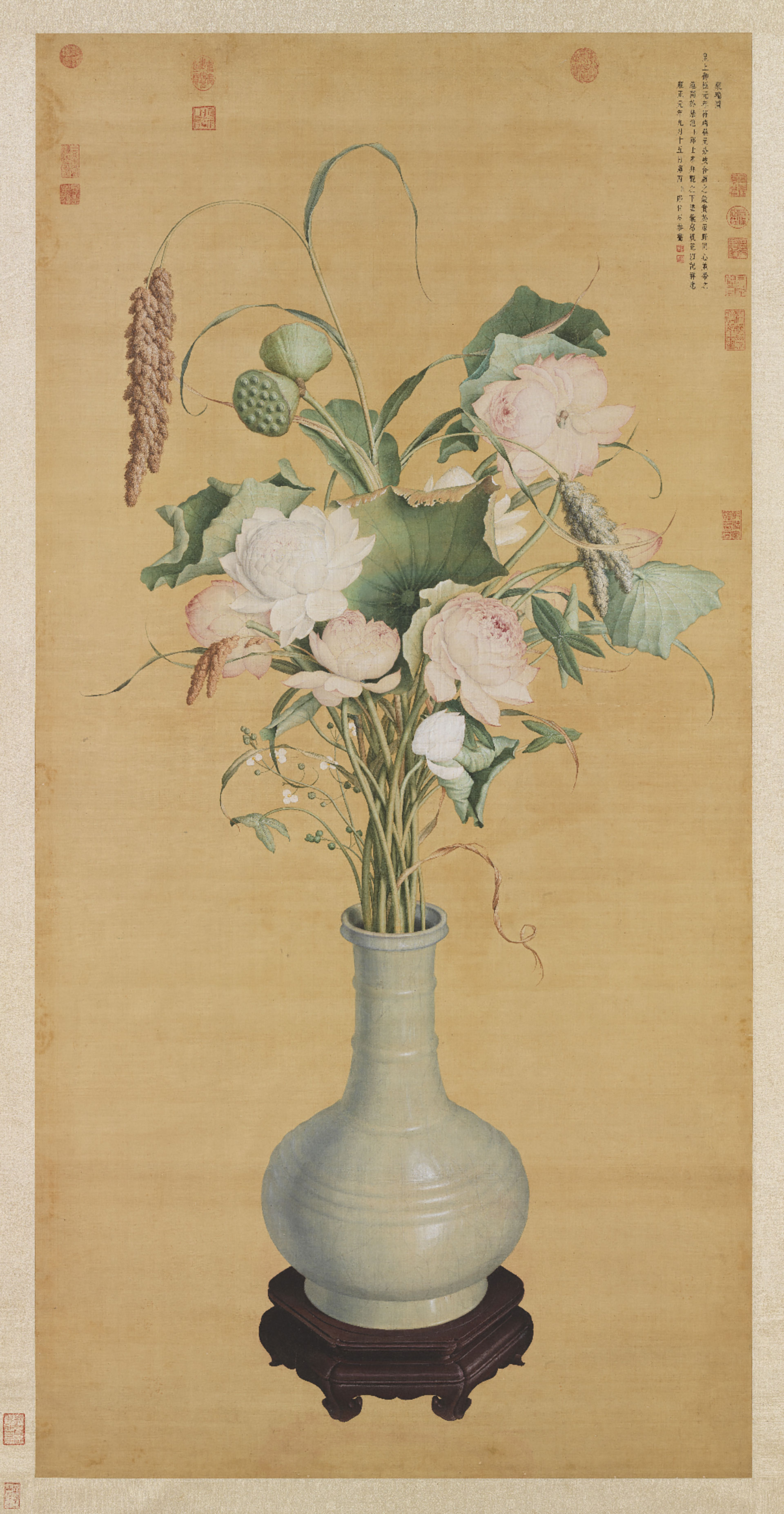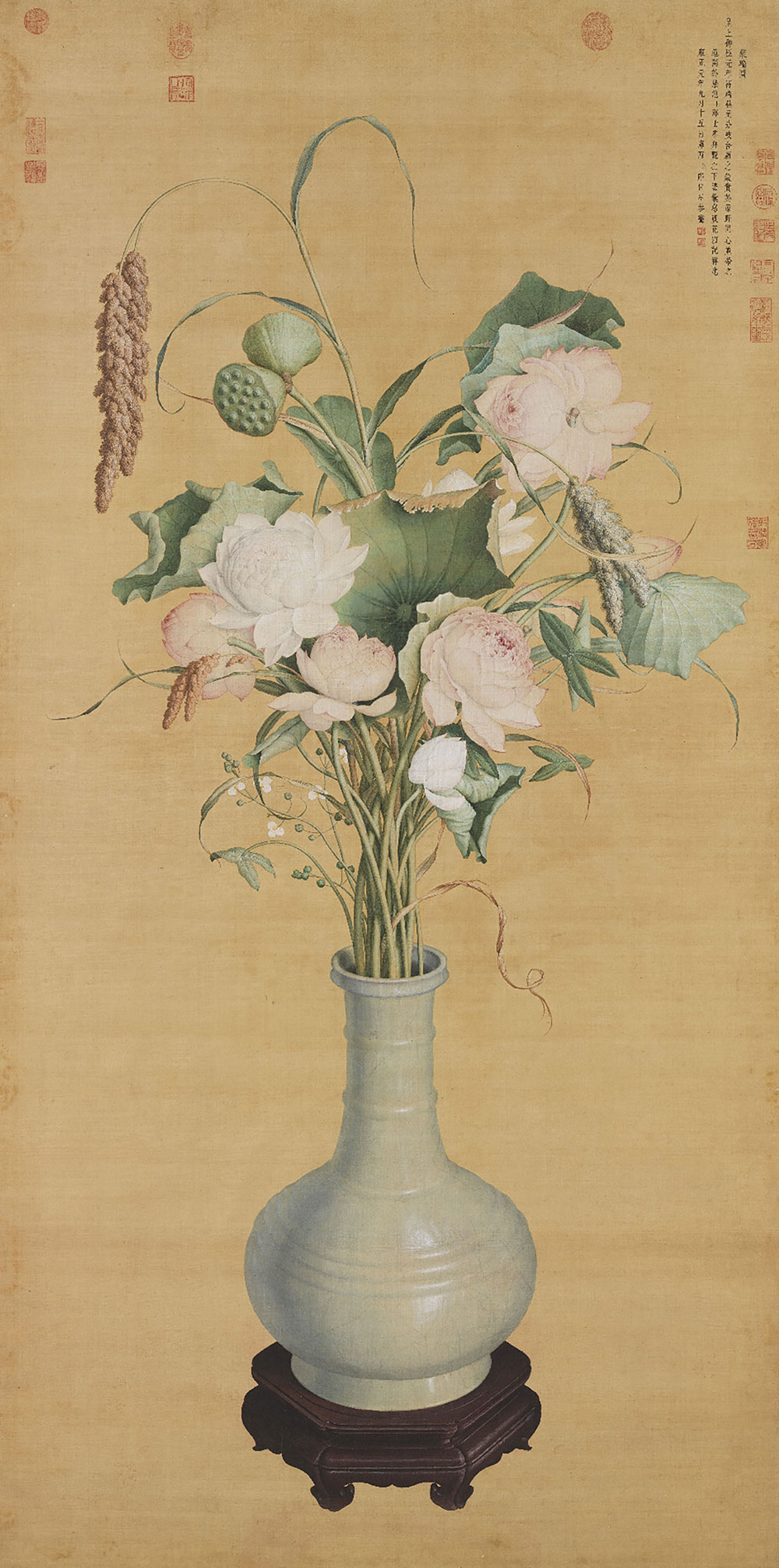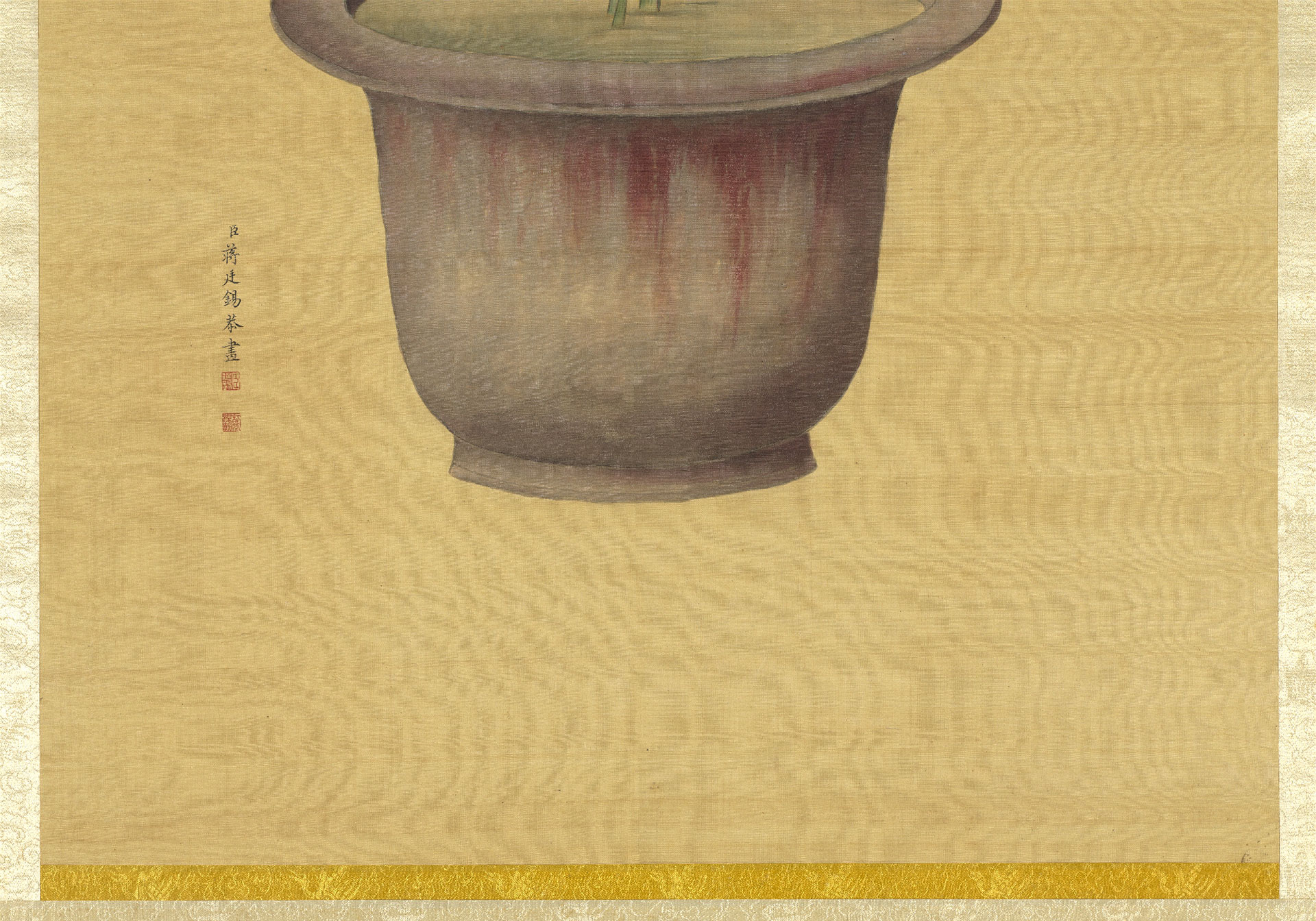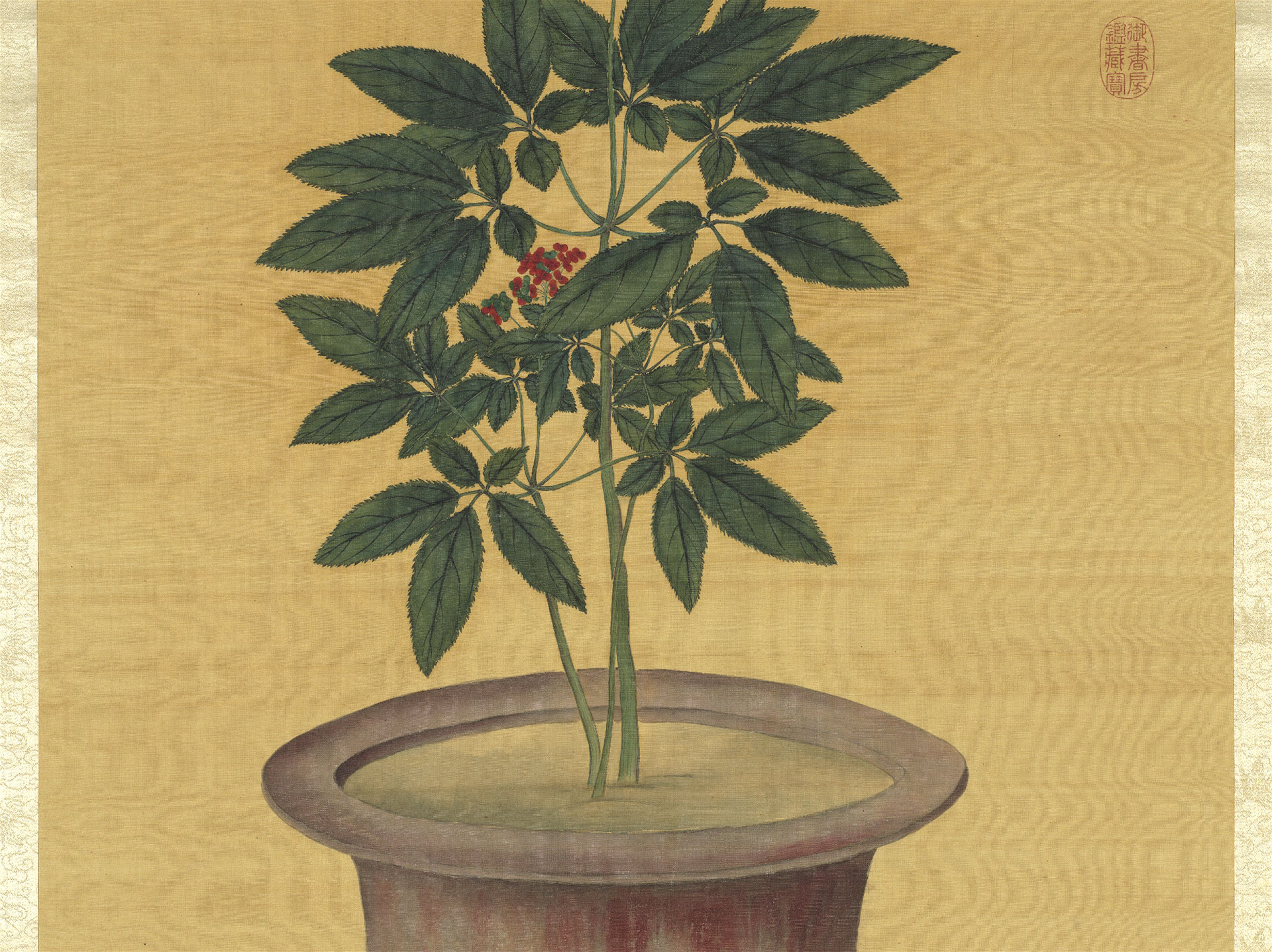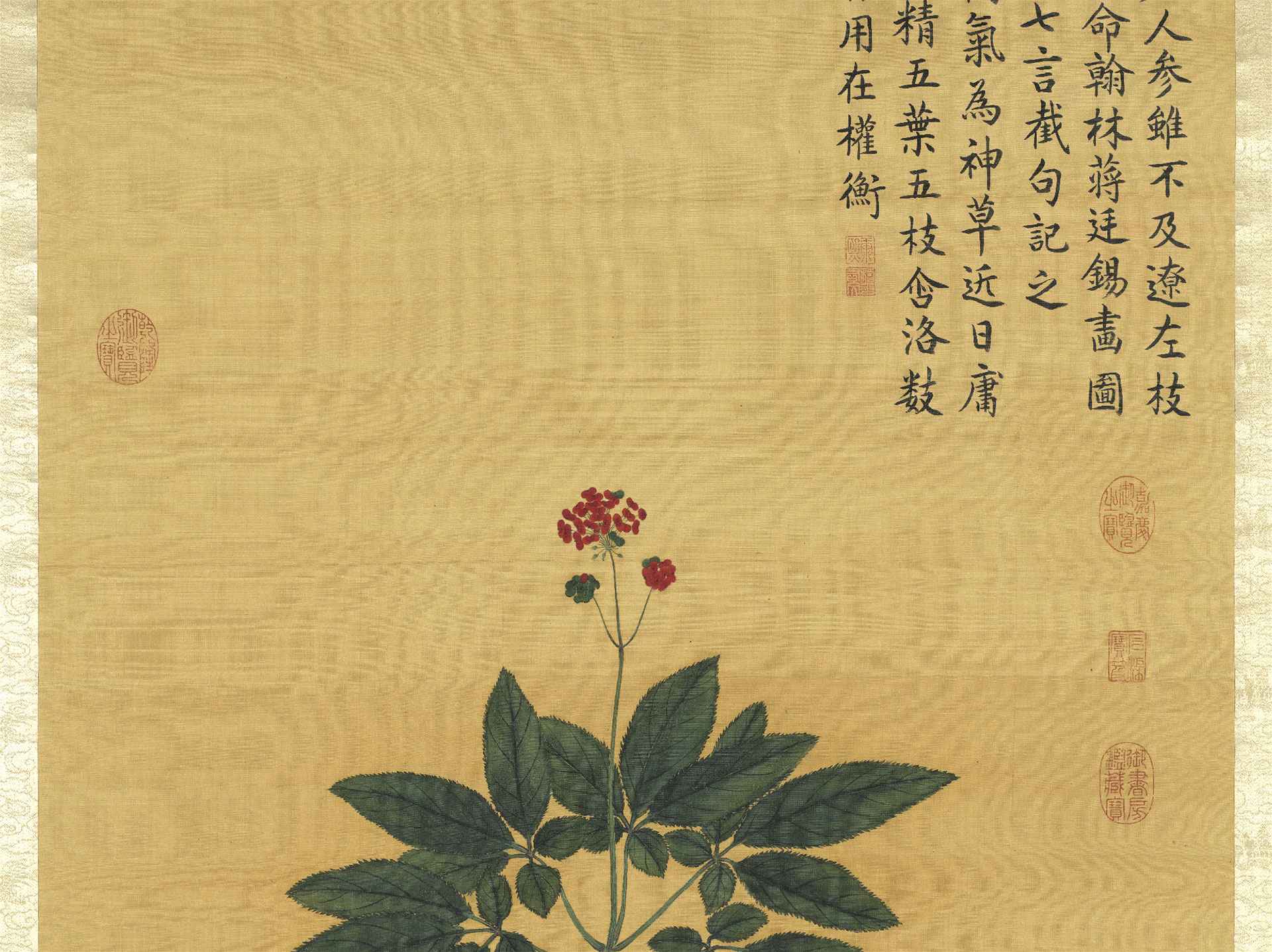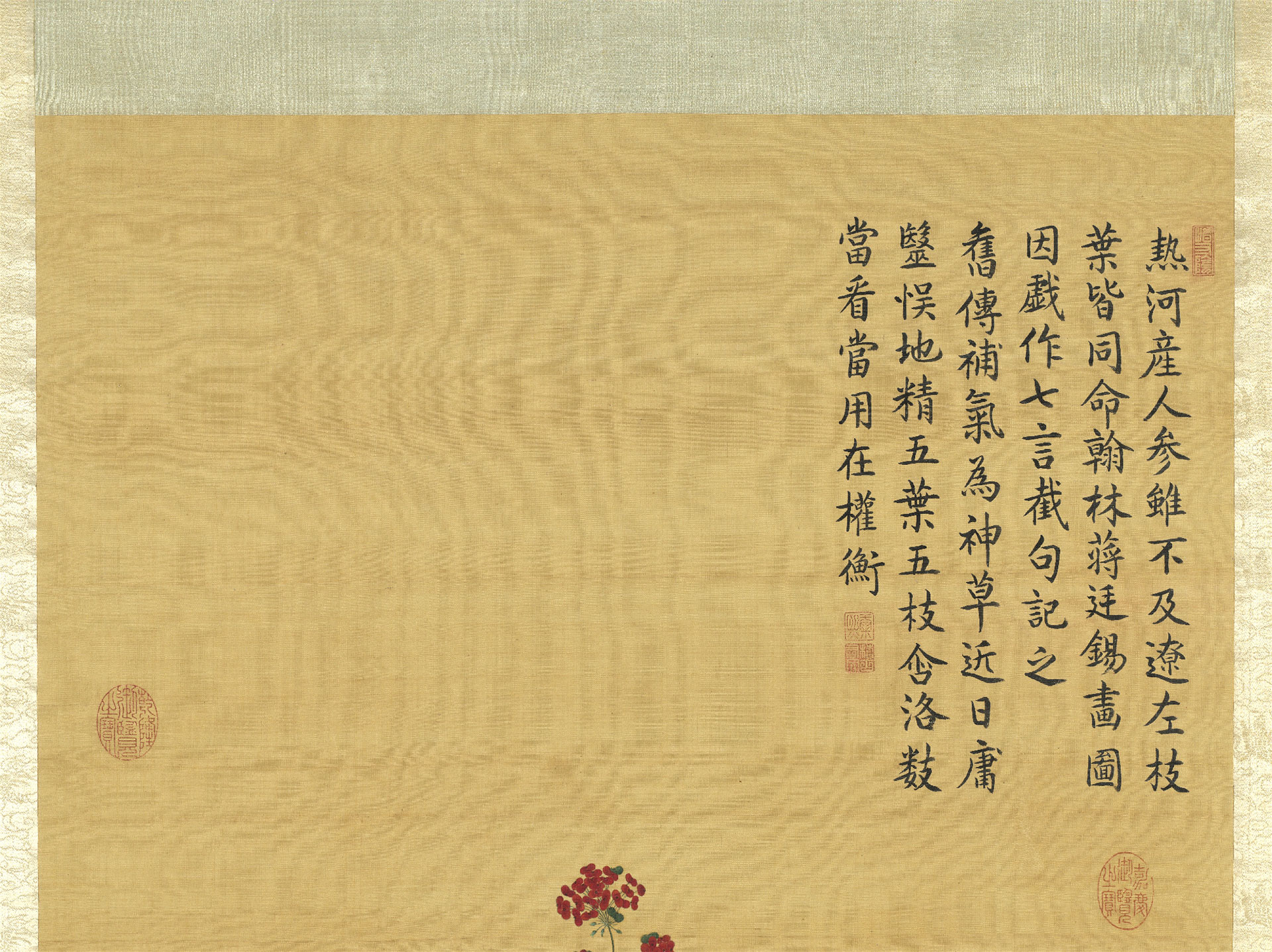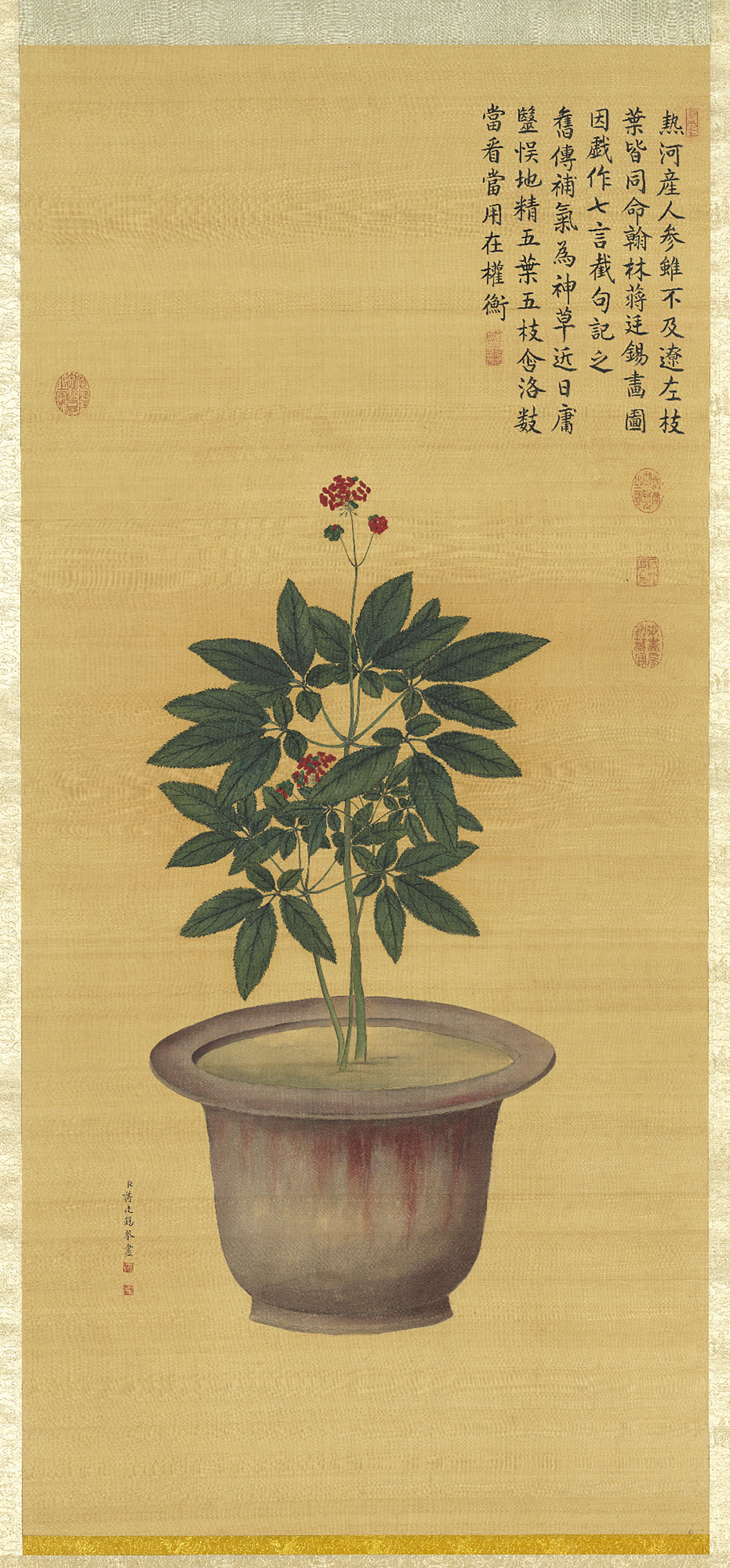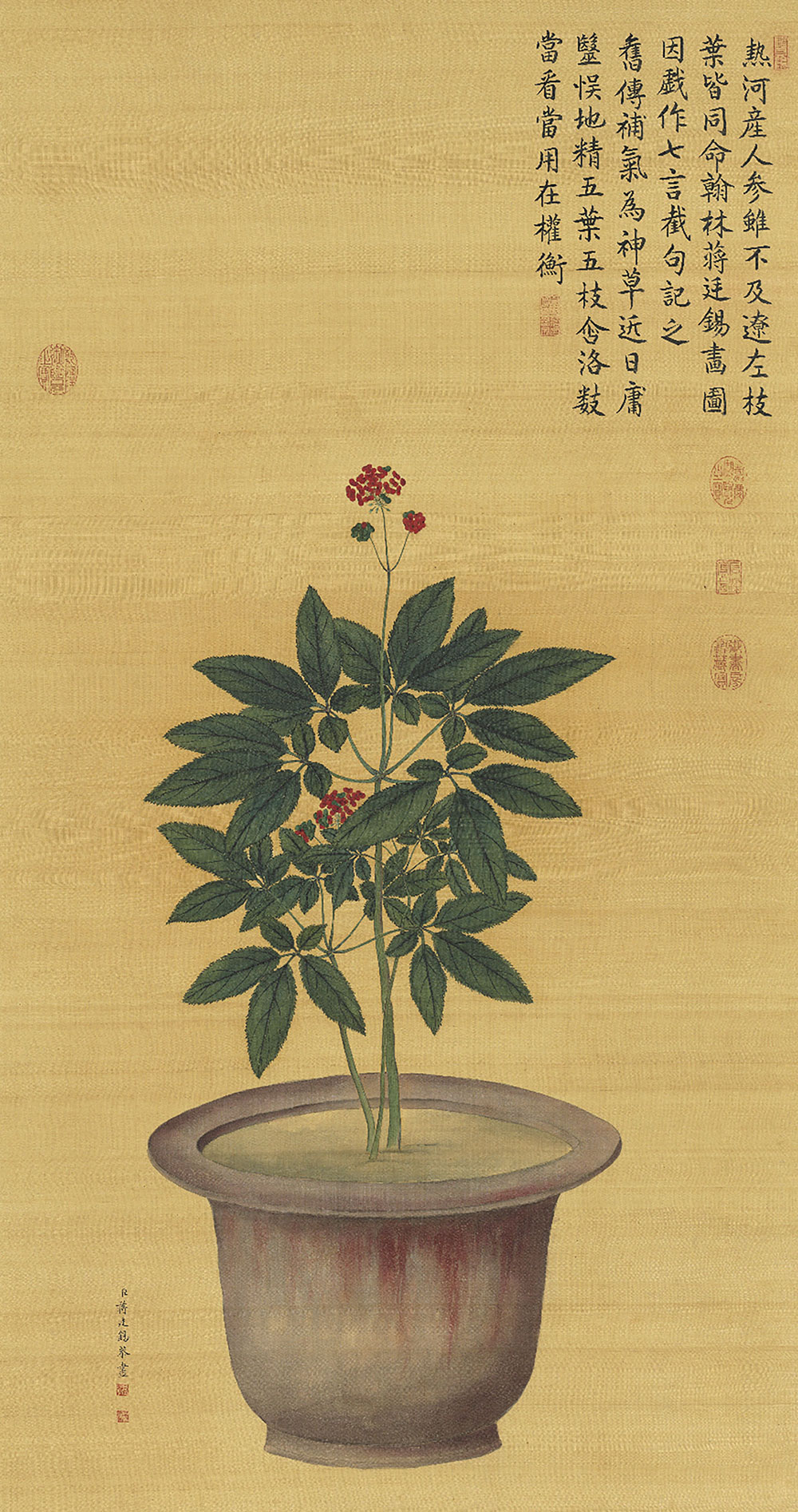Transplanted into the Imperial Gardens
In order to furnish the emperors’ flower appreciation and palace decoration needs, each month barges traversed the canal connecting southern China to Beijing. These barges were responsible for delivering seasonal flowers and fabrics woven in the region south of the Yangtze River to the “Southern Gardens” in the Forbidden City. In addition to importing flowers and plants from southern China, the emperors would also have flowering plants from northern regions transplanted into the Forbidden City and the Chengde Mountain Resort. Specimens included the thousand-petal lotus from Aohan County in Inner Mongolia and the golden lotus (Trollius chinensis) from the high mountains of northern China. By observing the conditions in which imported flowers and plants arrived in the capital, the emperors were even able to indirectly ascertain the climate conditions of the faraway regions in which they originated.
These flowers and plants from the empire’s different latitudes and altitudes were meticulously cared for by imperial palace florists, who even set up greenhouses to protect the plants in wintertime or control the timing of their blossoming. These florists overcame the challenges of “non-acclimatized” plants, helping them to bloom ravishingly. These blossoms reflected that the palace florists successfully grasped the plants’ unique characteristics as well as the techniques needed to create hospitable environments for them.
- Painting from Life (Chinese Globeflower and Marvel of Peru)
- Jiang Tingxi, Qing dynasty
- Paper
Two flowering plants appear in this painting, one blooming in yellow, and the other in purple. The yellow-petalled plant is Chinese globeflower (Trollius chinensis Bunge), which grows primarily in high altitude zones. Its common Chinese name translates as “golden lotus flower,” reflecting how the blossom’s shape is similar to the mythic flowers said to bloom in Amitabha Buddha’s Western Pure Land. The painting’s Chinese globeflowers are set off by the small purple flowers belonging to marvel of Peru (Mirabilis jalapa L.), a South American plant that is also cultivated in Africa.
Following his pilgrimage to the Buddhist holy mountain of Mount Wutai in Shanxi province, Emperor Kangxi had Chinese globeflowers that were growing there replanted in the Forbidden City’s southern gardens as well as at the Chengde Mountain Resort, a palace situated beyond the Great Wall used by the imperial family to escape Beijing’s hot summers. This newly-arrived plant became one of the “thirty-six sights of the Chengde Mountain Resort,” referred to poetically as “golden lotuses that match the sun.” Emperors Kangxi, Yongzheng, and Qianlong all wrote poems devoted to Trollius chinensis. It’s likely the plant so enjoyed their adoration because its flowers are of the same yellow that only members of the Qing imperial household were allowed to wear.
- "Ode to Golden Lotuses in Eight Rhyming Lines" in Running Regular Script Calligraphy, Inscribed on Imperial Commission
- Yu Minzhong, Qing dynasty
- Paper
This fan’s interior face bears a poem that Emperor Qianlong (1711-1799) wrote in the summer of his thirty-ninth year of reign (1774), entitled “Ode to Golden Lotuses in Eight Rhyming Lines.” The poem compares Chinese globeflowers (Trollius chinensis, commonly referred to as “golden lotuses” in Mandarin) to the historical Buddha, Shakyamuni, here referred to by his birth name, Gautama. An exegesis written for this poem points out that the first historical records of so-called golden lotus blossoms come from the Yuan dynasty, when it was recorded that a Mongol tribe called the Torghuts submitted to the Yuan emperor just after these flowers came into bloom. Emperor Qianlong surmised that the flowers mentioned in that anecdote were no other than Trollius chinensis.
This black fan emblazoned with poetry was inscribed using golden ink by the imperial scholar-attendant Yu Minzhong (1714-1779), who was a talented calligrapher. The linework of his running regular script is rounded, solid, and proportionate, with character structures that rise diagonally towards the upper right, in a style reminiscent of the great calligraphy master Dong Qichang (1555-1636), who lived during the Ming dynasty.
- Thirty-six Scenes of the Chengde Mountain Resort (Golden Lotuses that Match the Sun)
- Zhang Zongcang, Qing dynasty
- Paper
The Chengde Mountain Resort (originally named the Rehe Imperial Residence) was located beyond the gates of the Great Wall. Emperors Kangxi and Qianlong used to reside there between May and September or October of each year in order to escape Beijing’s summer heat. There they partook in autumn hunts beyond the Great Wall and received important visitors from Mongolia and Tibet.
The vista in this painting, called “Golden Lotuses that Match the Sun,” is part of the “Thirty-six Scenes of the Chengde Mountain Resort.” This piece, painted in the sixteenth year of Emperor Qianlong’s reign (1752), depicts the Yanxun Mountain Lodge that was located on Ruyi Isle, the garden of which was planted with the golden lotuses (Trollius chinensis) that Emperor Kangxi brought back with him from his trip to Mount Wutai in Shanxi province. This painting was created using simple brush and ink techniques, such that only the petals of the garden’s golden lotuses were depicted—and in such a way that they actually appear just as large as water-lily flowers.
- Vase with Lotus
- Jiang Tingxi, Qing dynasty
- Silk
This piece, which was painted in the fifty-second year of Emperor Kangxi’s reign (1713), depicts a vase that the emperor gave as a gift to the scholar-attendant Jiang Tingxi on the occasion of the new year. The upper right portion of the painting features a poem Kangxi wrote in his own hand—the poem’s contents are the same as that of the poem appearing in the “Thirty-six Scenes of the Chengde Mountain Resort” on the painting entitled “Fresh Fragrance from Afar,” suggesting that the lotus flowers in the vase in this painting are cold-resistant northern varietals.
Three different types of lotus flowers appear in this painting, setting one another off compellingly. The number of petals on the white flower with red accents is quite typical for lotuses. Conversely, the purple and orange lotus blossoms have a very large number of petals, indicating that they are of a varietal known as “thousand-petal lotus.” Moreover, the purple flower’s large and small petals are very distinct, appearing almost as though a small flower grows within a larger one. Because of these “petals,” which actually develop from the male and female stamen and pistil within the flower, this type of flower is also known as a “bilayered lotus.”
- Vase with Lotus
- Jiang Tingxi, Qing dynasty
- Silk
No date was written on this painting, which bears only a signature reading “Painted reverently by your servant Jiang Tingxi,” indicating that it was created as a gift for the emperor. This piece’s composition is similar to that of another work by Jiang Tingxi, “Thousand-petal Lotus from Aohan,” which he painted in the sixty-first year of Emperor Kangxi’s reign (1722). As both the vase and its base were depicted using occidental chiaroscuro painting techniques, it can be surmised that Jiang created both works in the same period.
This painting features white and pink thousand-petal lotuses, both of which boast copious petals. The white petalled lotuses’ pistils and stamens have “petalized,” or taken on the appearance of petals—this feature marks these flowers as being a “bilayered lotus” varietal. “Aohan” is the name of a Mongolian tribe and the lands it occupied. According records in the Imperially Commissioned Gazetteer of Rehe Province, which was written during Emperor Qianlong’s reign, the Chengde Mountain Resort imported lotus flowers from Aohan, Mongolia that bloomed in autumn despite the chilly temperatures in Chengde—these imported lotuses were an especially hardy and cold-resistant.
- Gathering of Auspicious Signs
- Giuseppe Castiglione (Lang Shining), Qing dynasty
- Silk
Lang Shining (Giuseppe Castiglione, 1688-1766) was an Italian missionary and painter who served for fifty-one years as a court painter and painting instructor from the reign of Emperor Kangxi through to the reign of Emperor Qianlong. This piece, which was painted in the ninth lunar month of the first year of Emperor Yongzheng’s reign (1723), uses the “occidental painting method” of chiaroscuro to emphasize the contrasts between the image’s illuminated and shaded regions. The celadon vase’s body (which features raised line patterns), its base, and the edges of the plants were all accented with white paint so that they would appear brightly lit, and also to increase their senses of three-dimensionality and lustrousness.
This painting features bilayered lotus, twin lotuses (which have two flowers on a single stalk), lotus seed pods, and a rice stalk with two panicles of grains. From the number of petals on the flowers and the month in which this painting was completed, it can be deduced that it depicts thousand-petal lotus. The painting’s inscription states that the twin lotuses bloomed in a pond in the imperial gardens. This indicates that after this lotus varietal was imported from Mongolia, it underwent a mutation that allowed it to grow two flowers on a single stalk, thereby becoming an auspicious sign that a new emperor would soon ascend to the throne.
- Ginseng Flower
- Jiang Tingxi, Qing dynasty
- Silk
This piece depicts a potted ginseng plant from the Chengde Mountain Resort. Not only was it painted using the unoutlined “boneless” technique, the artist also experimented with using paints of varying hues to detail the illuminated and shaded regions of the flowerpot. The ginseng plant’s leaves are completely unfurled, portrayed in such way that their faces are all oriented towards the viewer, with their serrated edges rendered in great detail. The same kind of composition can be seen in an oil painting Qing dynasty court painter Banda Lisha (years unknown) created on paper from Korea.
Emperor Kangxi (1654-1722) calligraphically inscribed this painting with a poem in the fifty-second year of his reign. In the poem he appraises the ginseng of Rehe province (modern day Hebei province), stating that it is inferior to ginseng from its native habitat, the Liaodong peninsula in northeastern China. However, he also points out that Rehe ginseng always has “five branches, each of which has five leaves,” a feature that corresponds with ancient “Inscription of the River Luo” numerology, in which the number five represents the center of creation. The poem concludes with a reminder that, even though ginseng is seen as a herb with marvelous healing properties, it must be used with caution.
- Zhang Ruo'ai, Qing dynasty
- Silk
Zhang Ruo’ai’s (1713-1746) Chengde Mountain Resort Paintings Inscribed with Poetry by Qianlong comprises four albums in total. Each vista depicted in the paintings is accompanied by calligraphic renderings of poetry written by emperors Kangxi (1654-1722) and Qianlong (1711-1799). The scenes selected for this exhibition are called “Fresh Fragrance from Afar” and “The Lotus Scents of the Festival of Ablution.” Very similar in composition, they both depict palatial structures that include open-air ramadas erected next to waterways. These gently winding waterways connect to ponds filled with lotus flowers would have allowed scholars to enjoy the activity of writing poetry while passing cups of wine to one another on tiny rafts floating atop the water.
Lotus, also known as water-lily, is a flowering plant that is commonly seen in summer all throughout China. Emperor Kangxi had lotuses brought to the lakes and ponds in the Chengde Mountain Resort, leading the area to earn the moniker “Jiangnan of the North” (“Jiangnan” refers one of China’s southern regions, located to the south of the Yangtze River basin). “Fresh Fragrance from Afar” primarily depicts the various types of lotus flowers from all over northern and southern China that were brought to Chengde. Conversely, “The Lotus Scents of the Festival of Ablution” depicts only the lotus flowers that were imported from Aohan County in Mongolia, which are a cold-resistant varietal that blooms in autumn.

